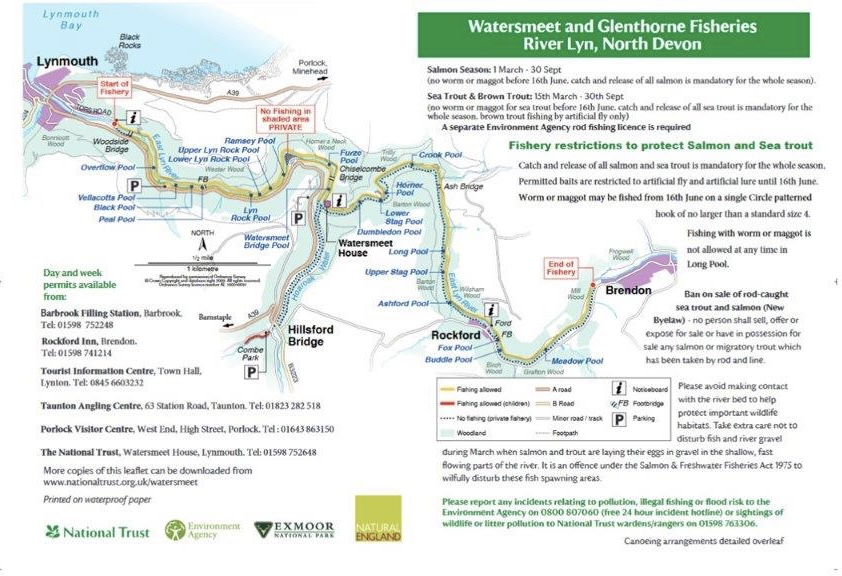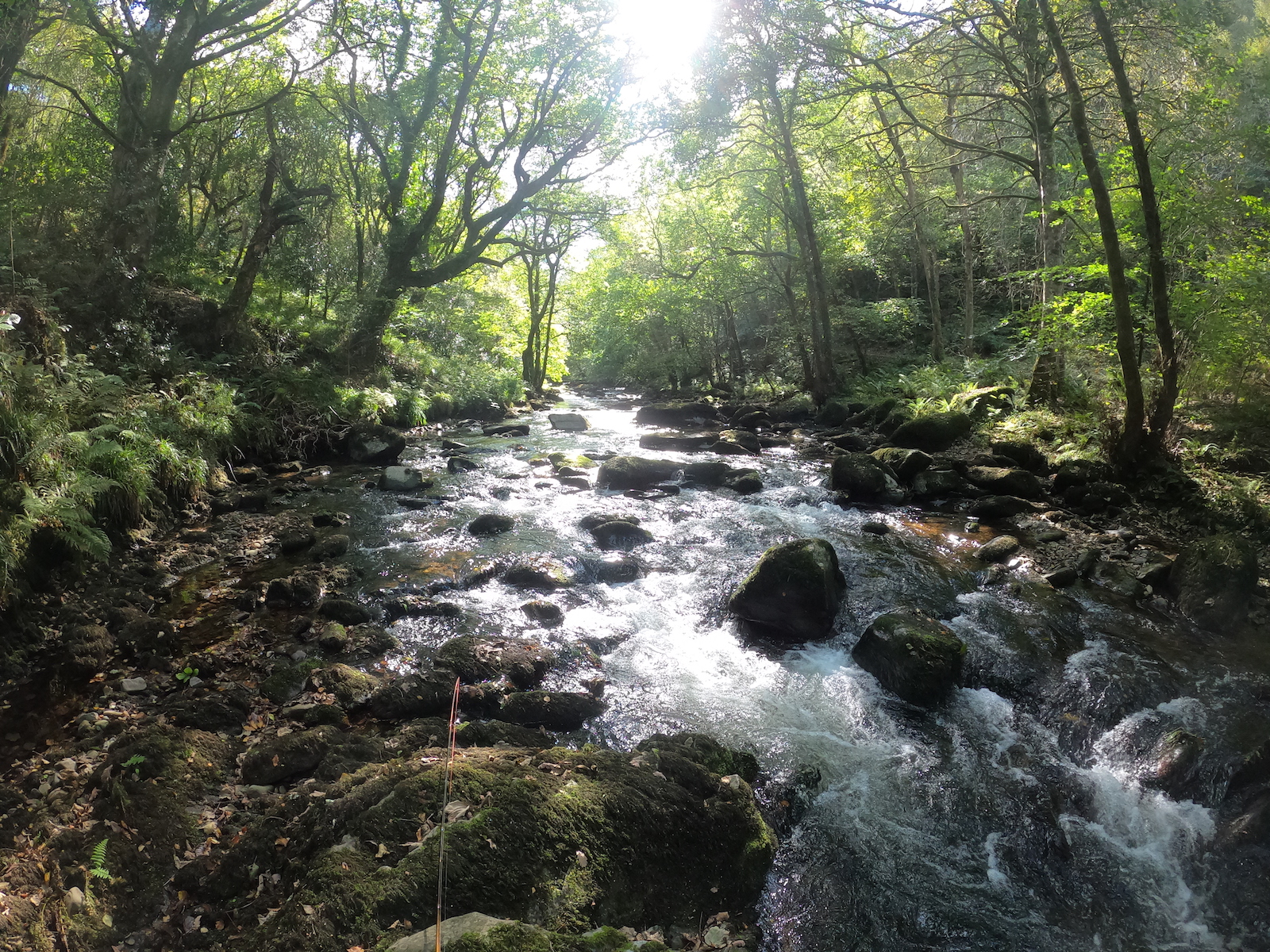The next showing of the Riverwoods Film is at Lynmouth National Park Centre. It will be followed by a presentation by myself that will include a focus upon the River East Lyn and its declining salmon population.
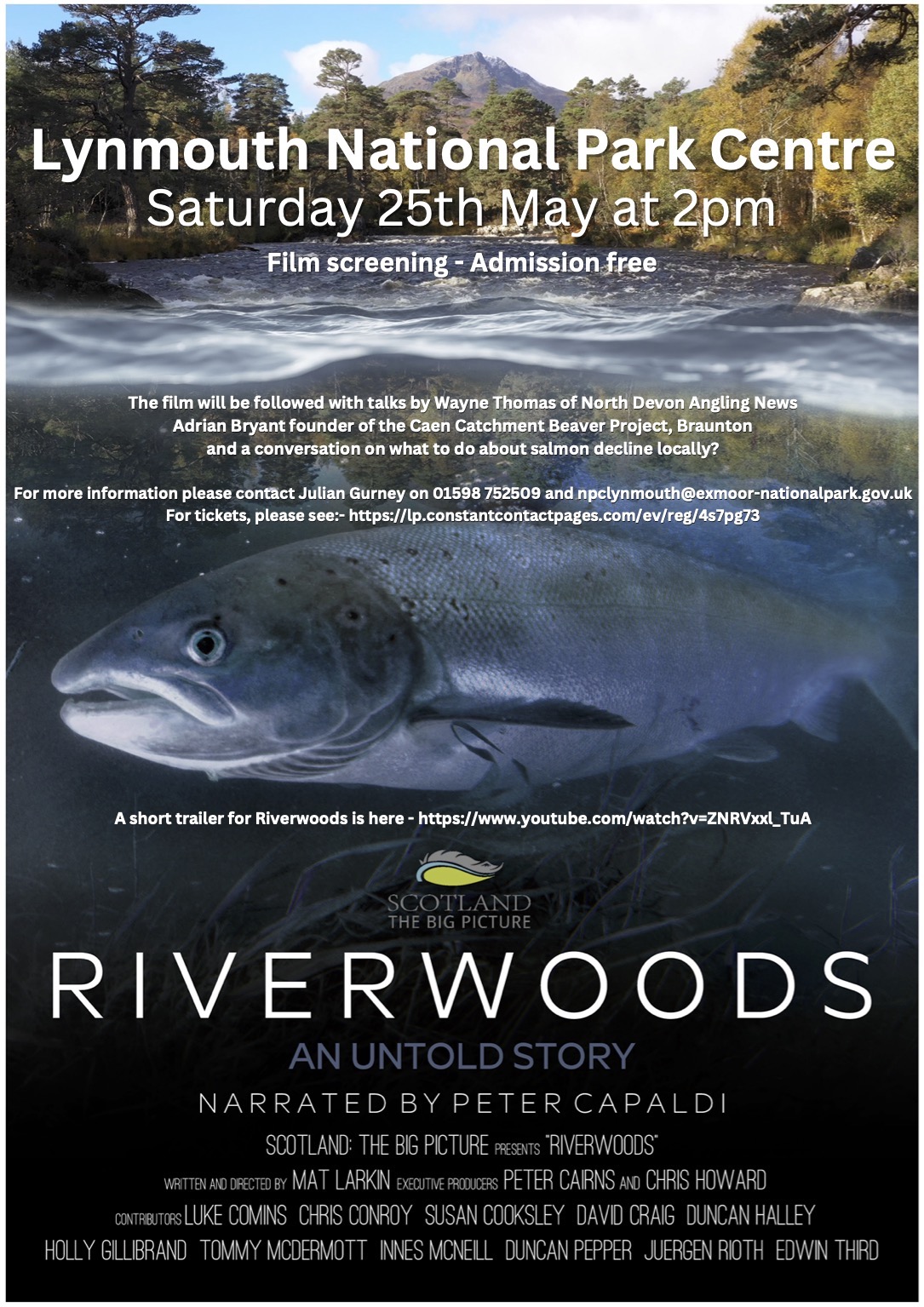

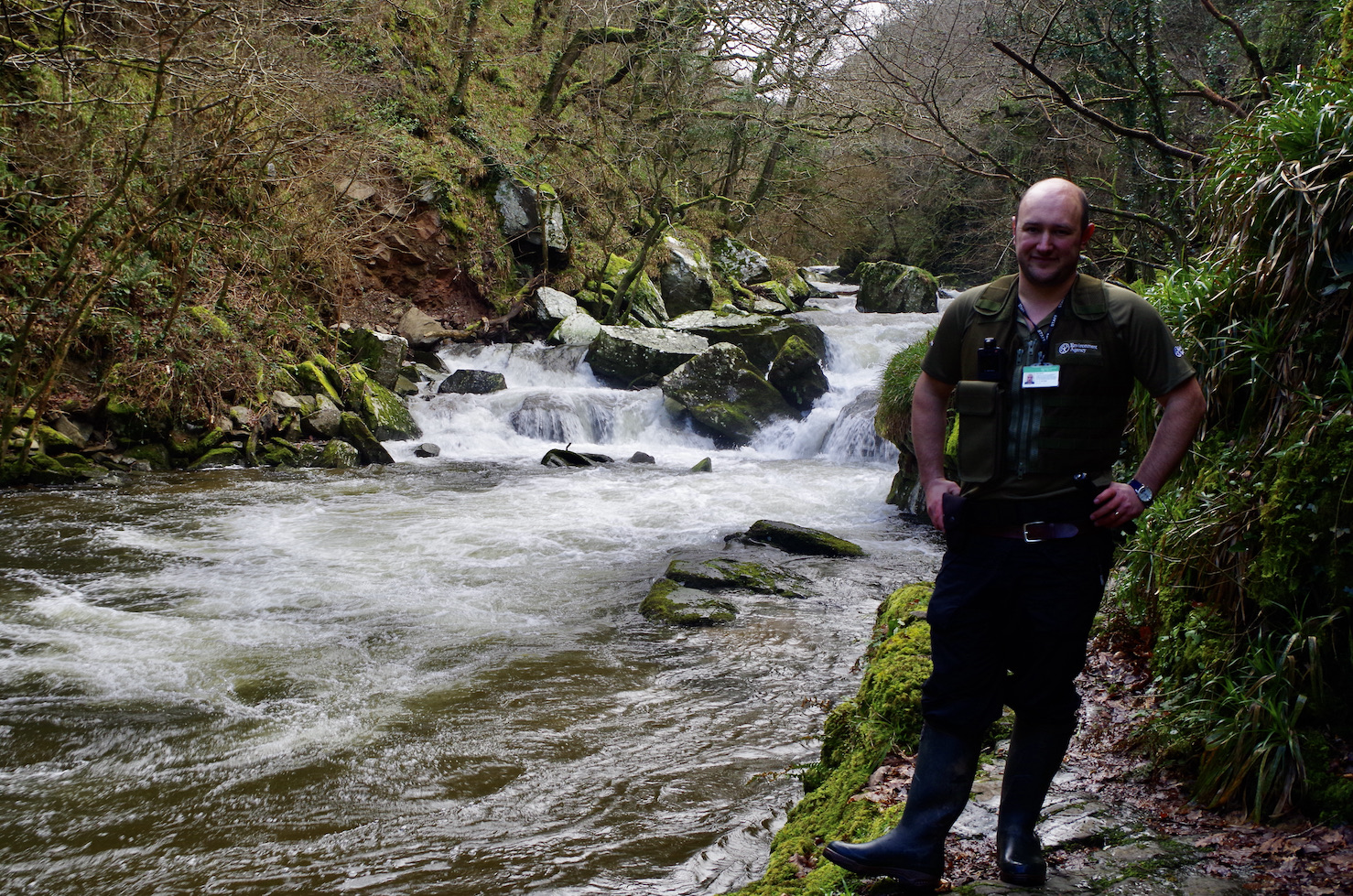
Sam Fenner the Environment Agency’s North Devon fishery enforcement officer is keen to engage with the local angling community and has recently attended several club AGMs.
Sam previously worked in Scotland gaining valuable experience working with the farming community in byelaw enforcement. He brings this extensive knowledge to his role in North Devon that involves a wide patchwork of rural landscape.
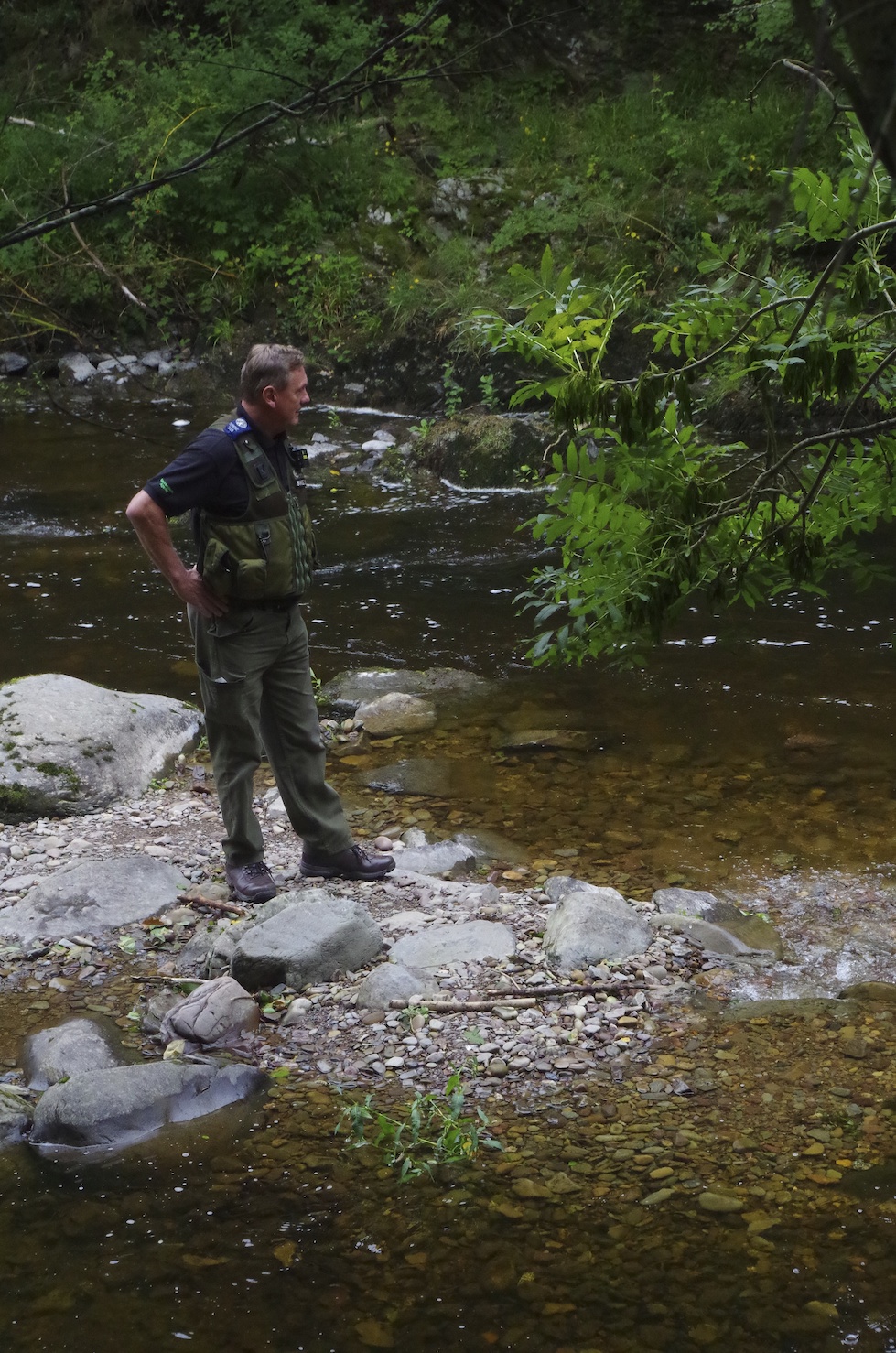
I joined him for a walk along the River East Lyn one of North Devon’s most beautiful and historic rivers. It was early March when we met and the river was running high and clear after one of the wettest February’s on record.
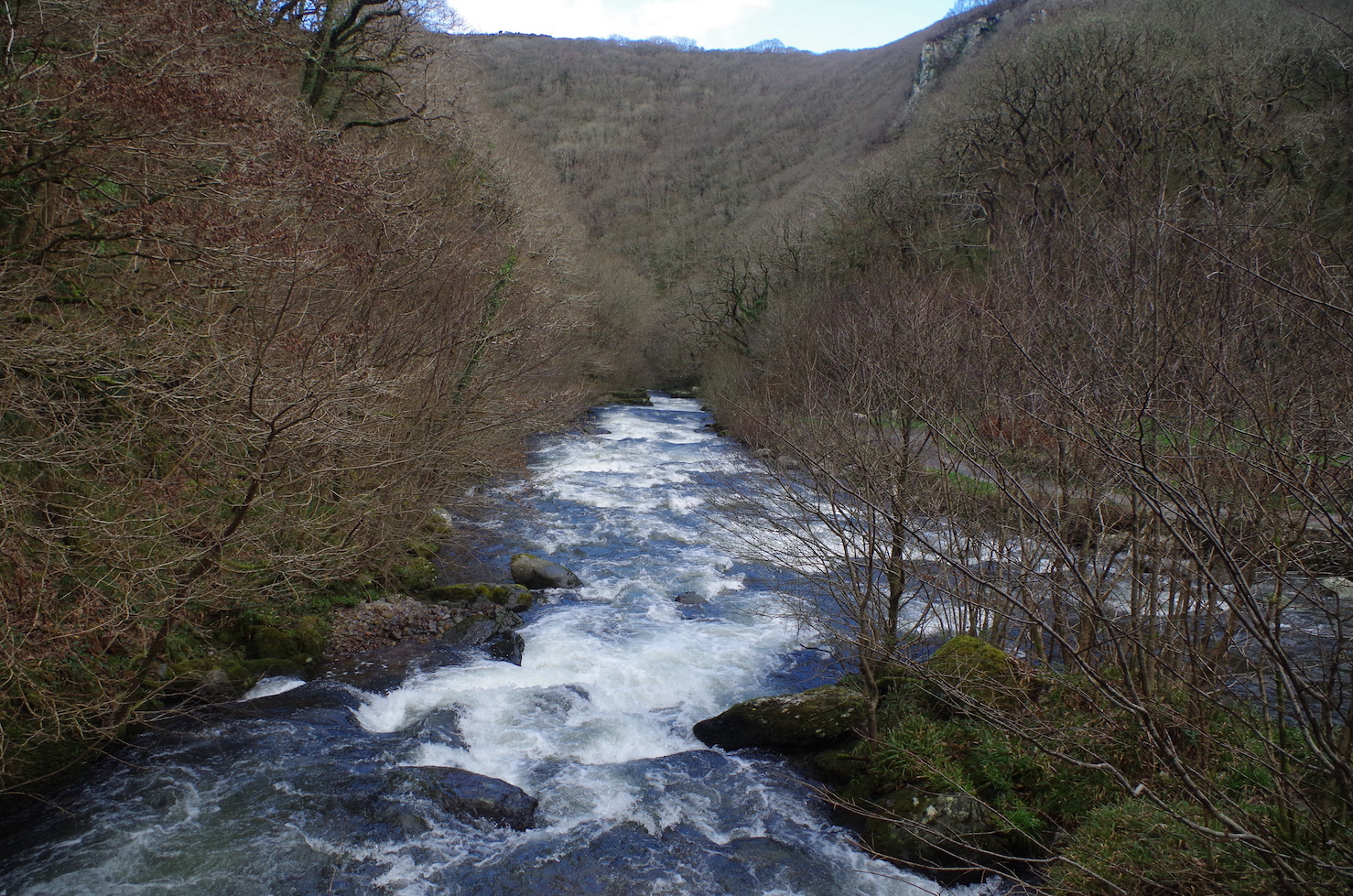
The salmon fishing season commences on March 1st on the Environment Agency’s day ticket fishery. Trout fishing starts on March 15th. The salmon run generally gets underway in late April or May if conditions are suitable with the river very dependent on rain.
The dramatic decline of salmon was very much top of the agenda as we walked the river. Having fished the Lyn intensively in the 1980s I have many good memories of those days of plenty. Though when I talked with anglers back then the fishing was still just a shadow of its glory days in the fifties and sixties.
The water quality of the East Lyn is undoubtedly still good as there is no extensive agricultural pollution. Poaching is no longer a significant problem on the Lyn so the main issues facing its salmon and sea trout are undoubtedly survival at sea and predation.
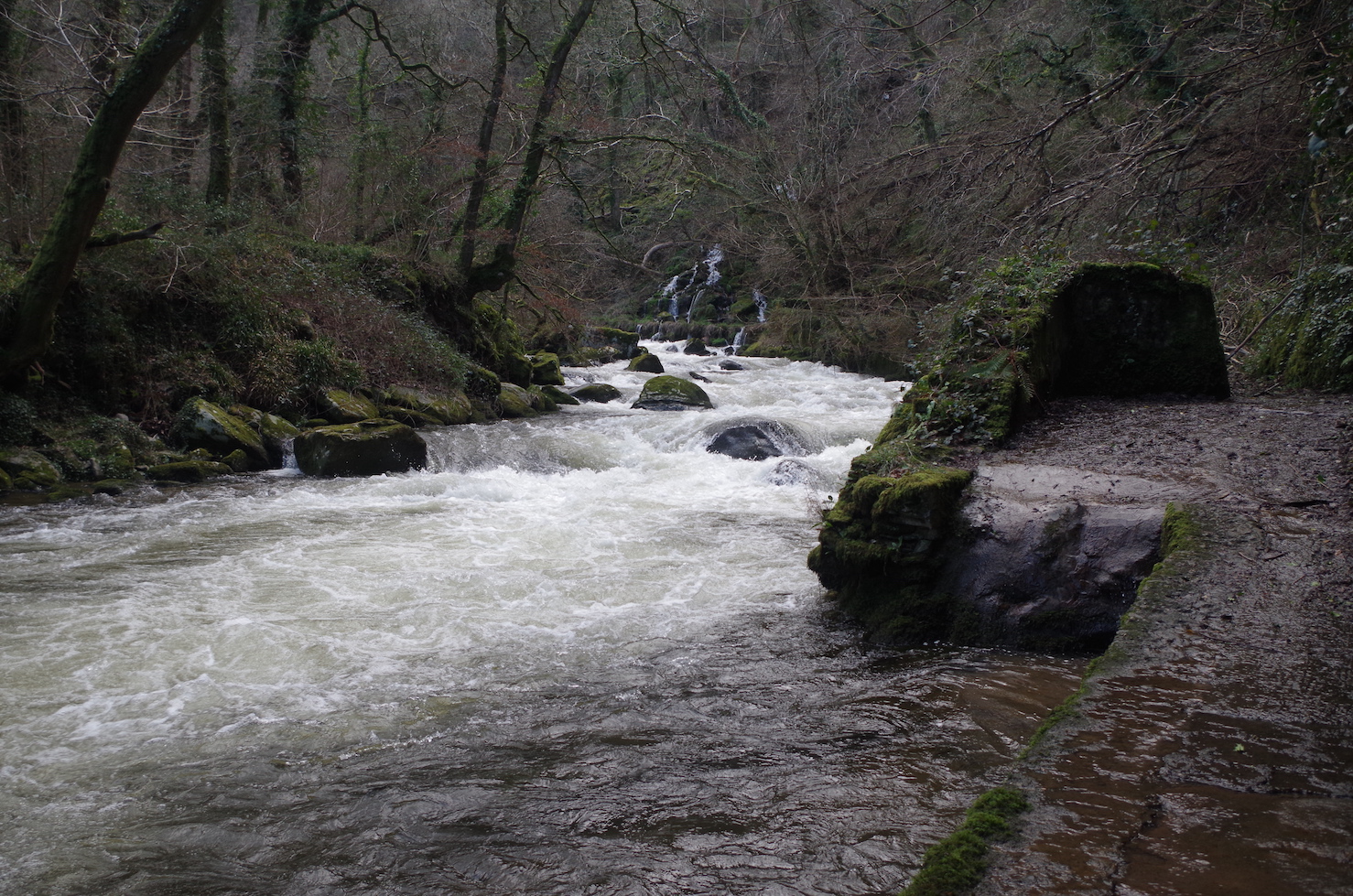
The Lyn offers superb fishing for abundant wild brown trout at a very reasonable cost of around £5.00 per day. Tickets are available from Barbrook Filling Station.
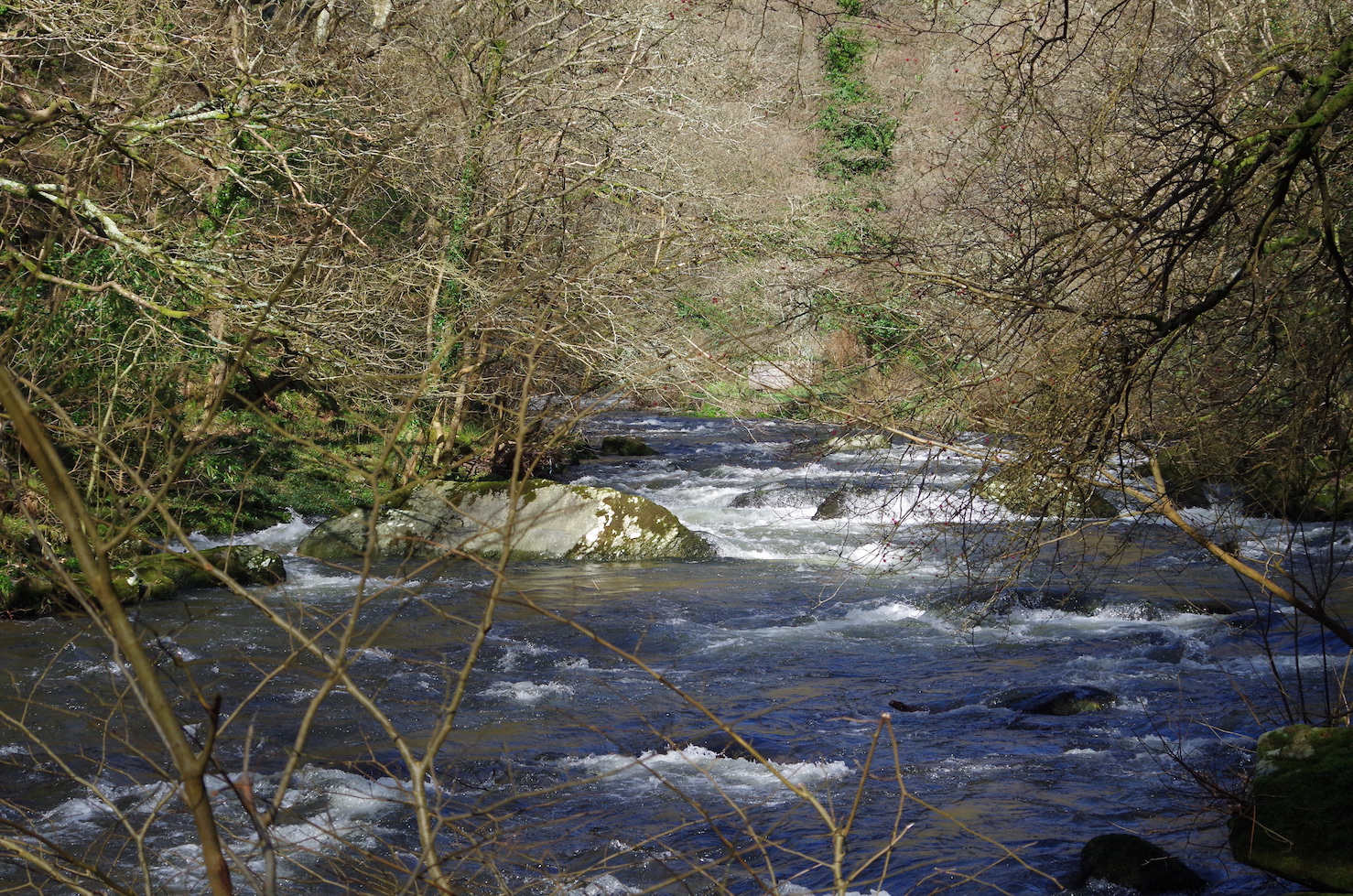
We started our walk at Torrs Road and walked up to Ash Bridge half a mile above Watersmeet. I was able to relay plenty of stories relating to the Lyn and we paused at Overflow and Vellacott’s Pool both of which have a rich history. The recent decimation caused by ash die back is plain to see on the rivers banks and this has undoubtedly been a major issue for the National Trust. Sadly some pools that were prime salmon holding pools are now difficult to access with some angler’s paths now overgrown.
We sighted a pair of goosander above Watersmeet a species that undoubtedly predate on smolts and salmon parr within the river.
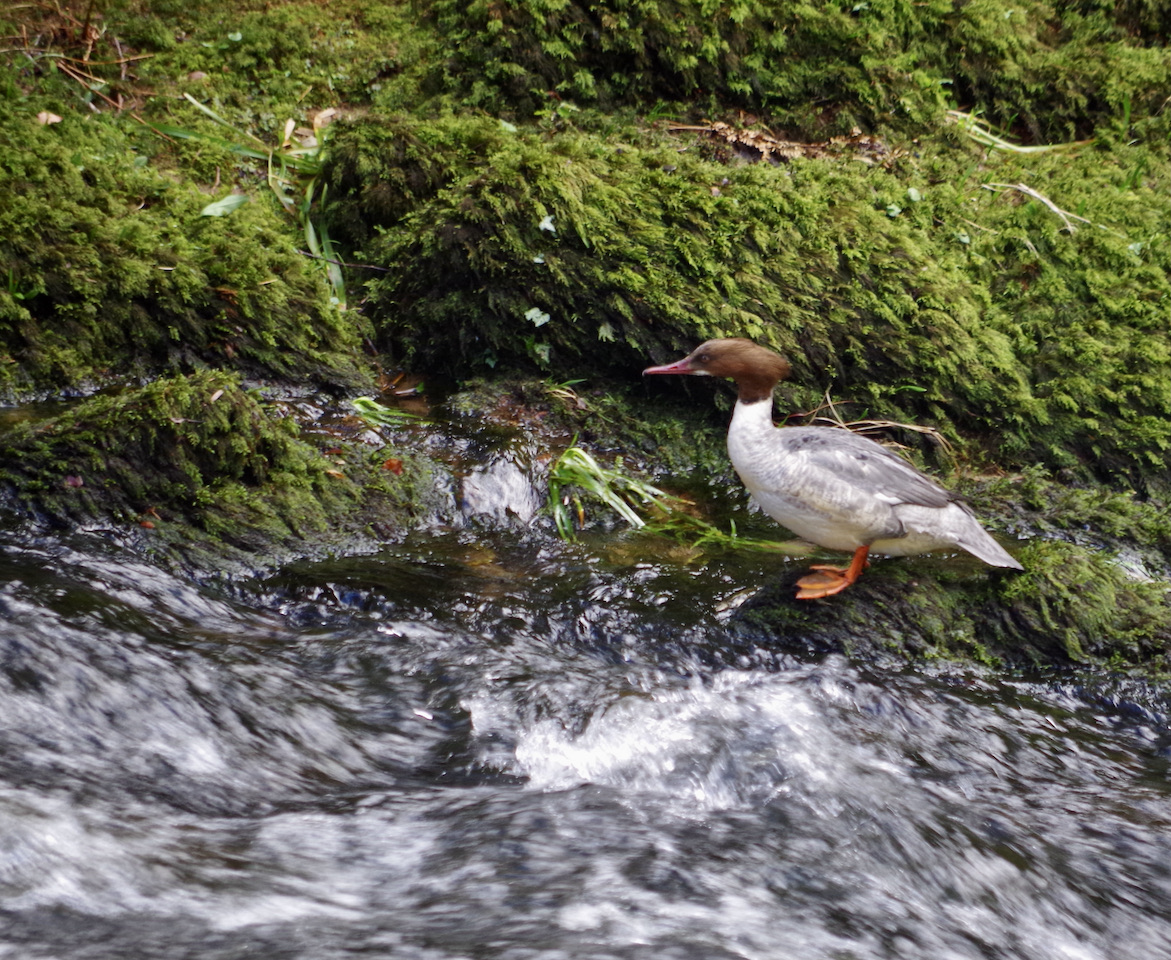
The boulder strewn river was as beautiful as ever and I look forward to returning its banks with the fly rod later in the Spring when its crimson spotted trout offer exciting sport.
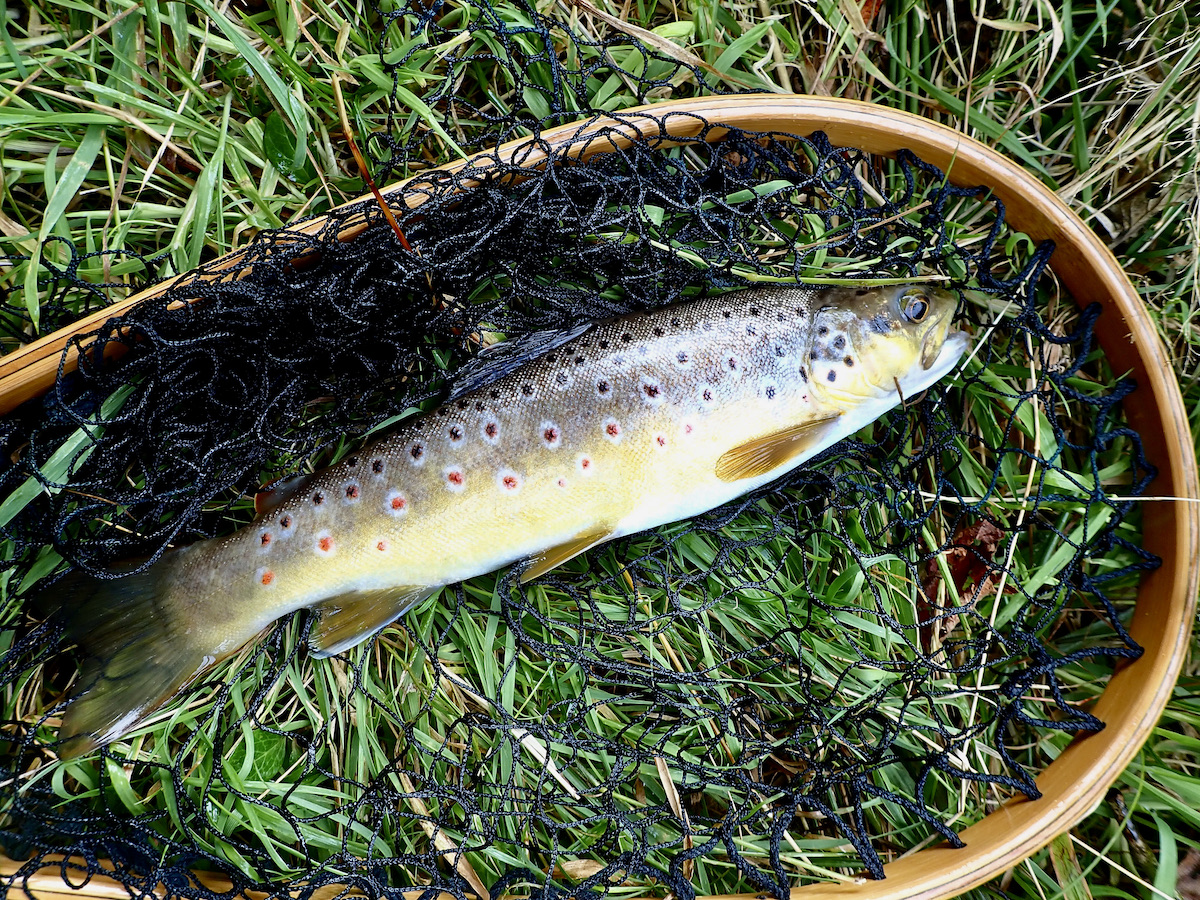
Sam talked of the challenging role of being fishery enforcement officer. He is very keen to encourage more anglers to enjoy the superb fishing the Lyn has to offer.
Rod licence checking is one of Sam’s main roles, he also works to enforce local byelaws, assist with pollution incidents. Offers advice to fishery owners and clubs regarding stocking and fish health, promotes angling and its mental health and community benefits in conjunction with the Angling Trust. Sam also works with the D&S IFCA in carrying out estuary protection work.
Sam’s area consists of all of North Devon and its rivers and stillwater’s. Quite a challenge if you consider that there were up to eight fishery enforcement officers during past decades.
After walking the river we adjourned to the National Parks Pavilion Centre for a coffee and a chat with Julian Gurney who has a wealth of experience in relation to the River Lyn and its history. Julian has written a piece for the Exmoor Magazine that includes the fascinating history of fish traps at the mouth of the Lyn and the coastline.
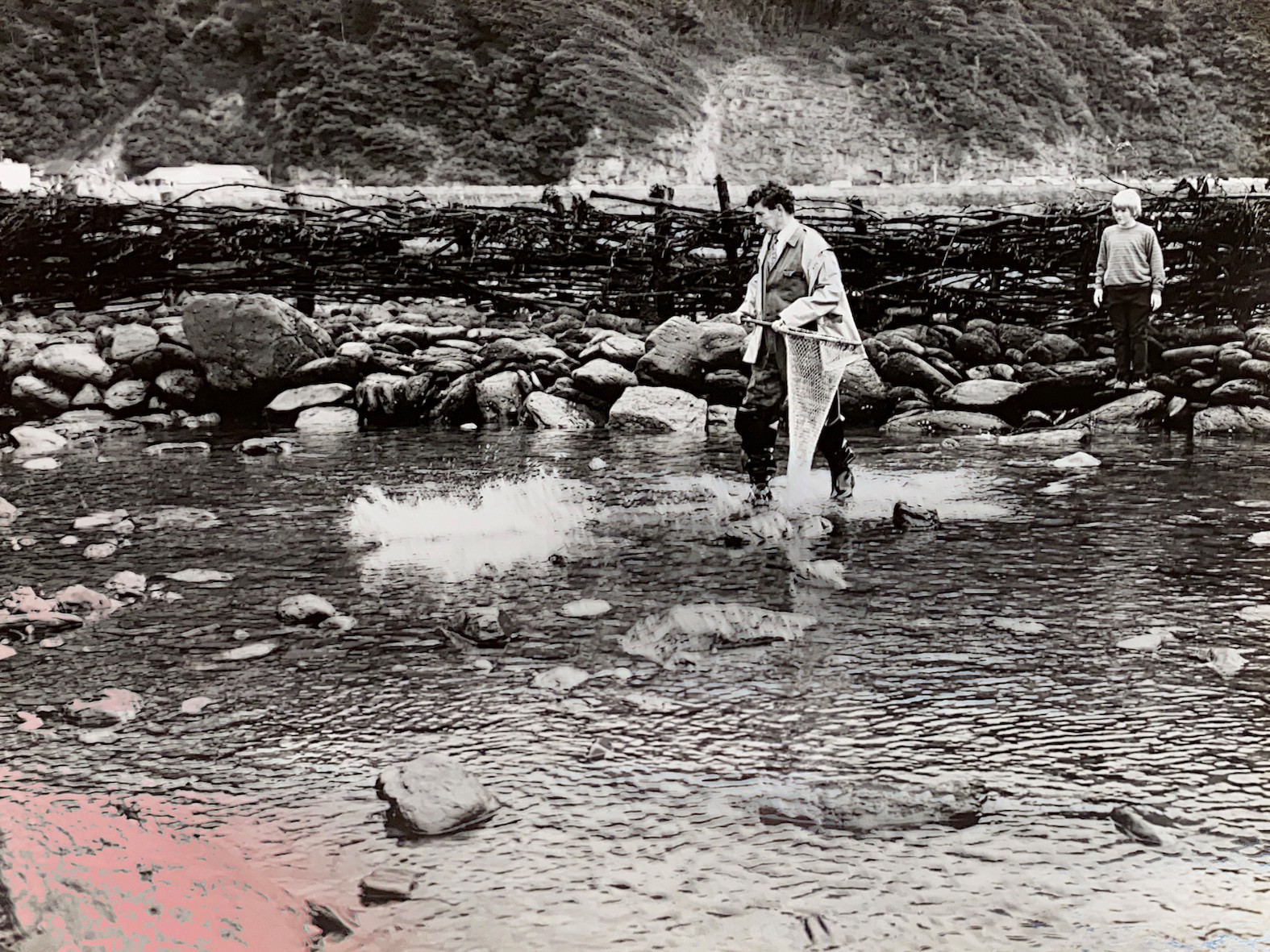
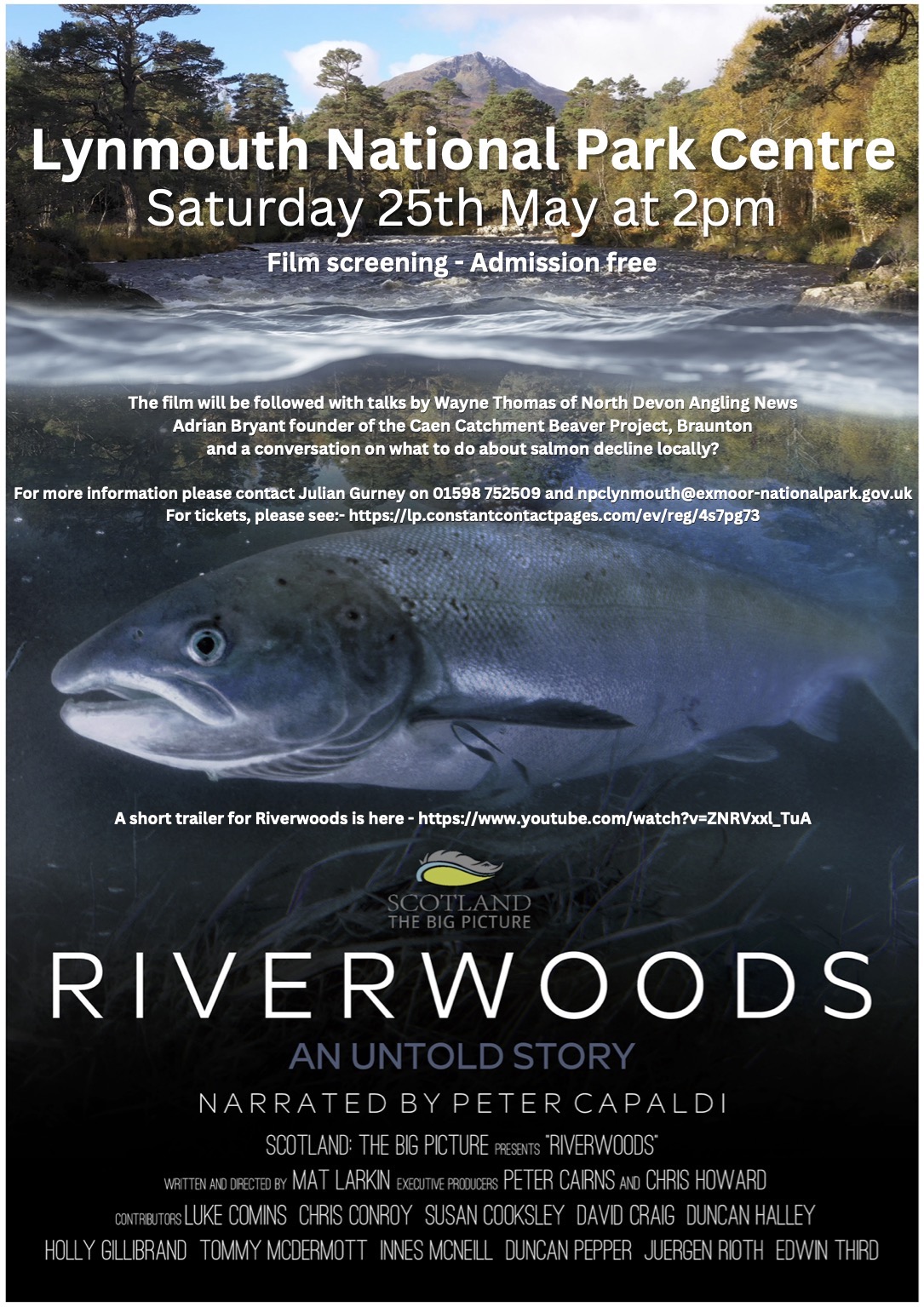
I have started writing a few features on the new countryside writing platform scribehound. Please see link below to latest article.
https://www.scribehound.com/lifestyle/s/fishing/gone-in-a-lifetime
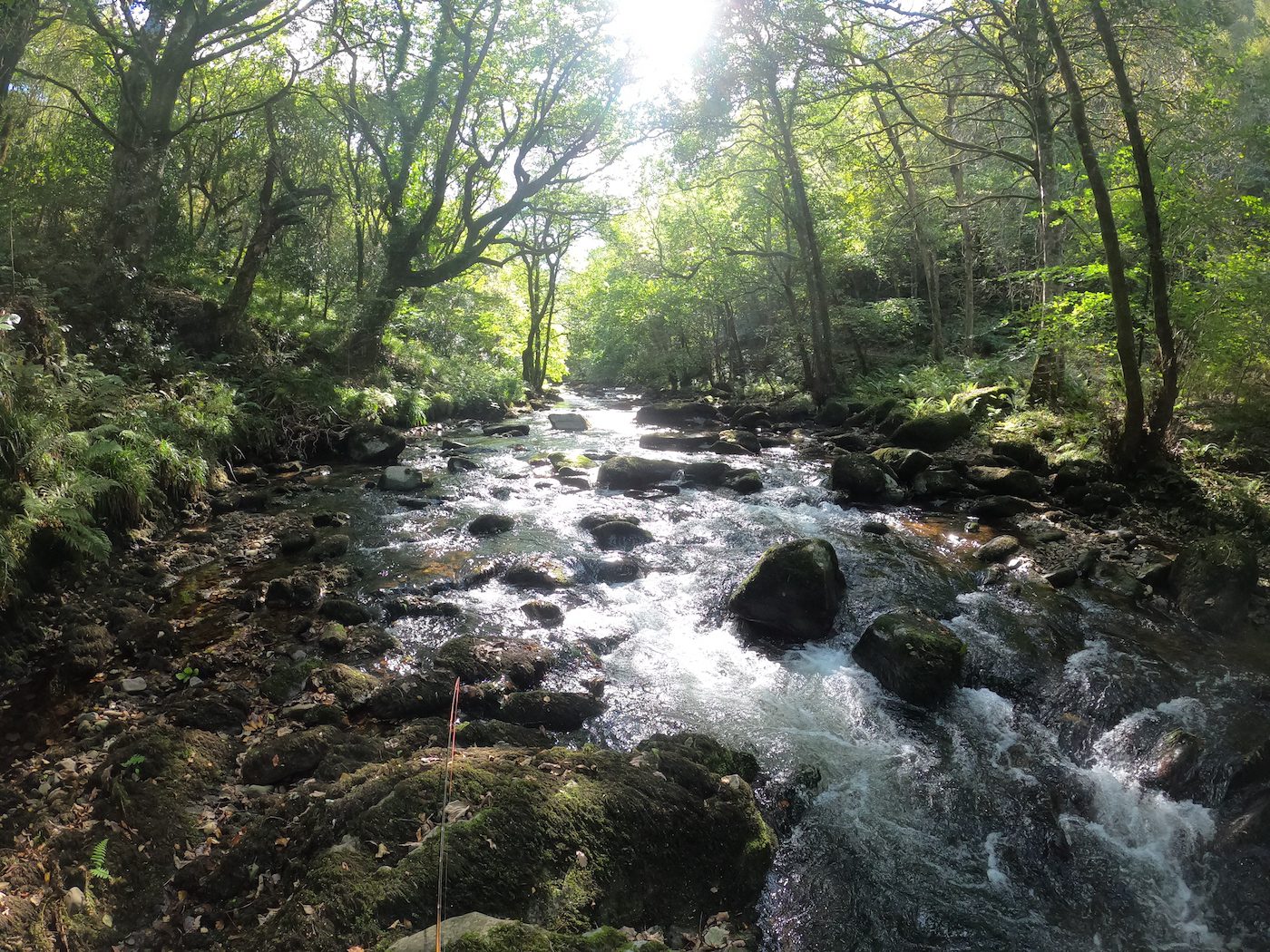
I will also be delivering a short talk after the Riverwoods film at Kings Nympton on Friday October 20th.
I recieved an email from a reader of North Devon Angling News and have published it here with my reply. Darren’s email mirrors many of my own observations and thoughts on the River and its decline. Many thanks to Darren for giving me permission to publish along with my reply.
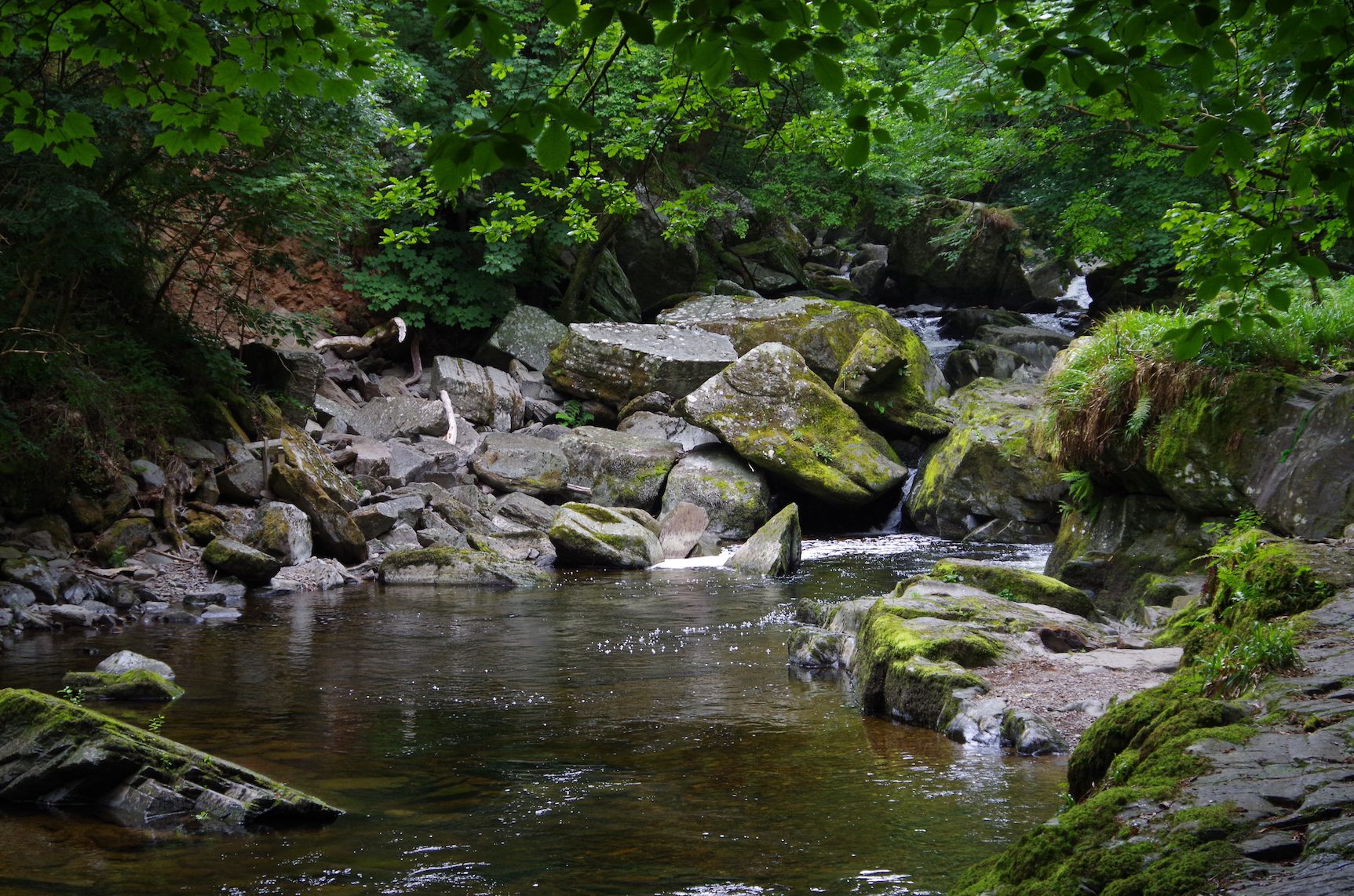
Hi Wayne,
I chanced upon the NDAN website and indeed your book “I Caught a Glimpse” this year – excellent reading and nice to see a website so regularly updated.
https://thelittleegretpress.co.uk/product/i-caught-a-glimpse-ltd-edition-hardback/
Both from reading your book and old articles on the website it’s interesting to see the change in target species over the last few decades. We read about the reasons put forward and they seem to be many and varied. It set my mind running on a couple of points of local relevance.
The East Lyn is indeed a beautiful river and, although I wasn’t lucky enough to experience it, I’m sure it’s days of plenty live long in the memories of those who did. But why the drastic decline – with the salmon run a shadow of its former glory and I doubt it’s fished much at all for sea trout nowadays. You wonder what the culprits are. We can’t blame fish farming – the Severn is mercifully free from that industry which seems to have blighted the west coast of Scotland. The twin evils of pollution from farms (pesticide and fertilisers) and sewage discharge from treatment plants can’t be an important factor in that catchment can they ? The brown trout population seems to be relatively healthy so the environment for parr developing to the smolt stage would seem to be good. I’m my limited walks along the river and along the coast looking out to sea I don’t see the preponderance of fishing eating birds and seals I’ve seen elsewhere.
If I’m right in that unscientific guesswork it makes you wonder what’s going on out at sea. I suppose the salmon could be caught in large numbers at or en route back from their feeding grounds (like they used to be with drift nets on my native river Foyle). But surely not the sea trout which, as I understand it, doesn’t travel large distances and feeds around the coast. I’ve no doubt the bait fish such as sandeels, whitebait, etc. are hoovered up in huge quantities which could affect dependant species (although the bass seem to get by).
You do wonder if rising sea temperatures have had a pernicious impact. The reports of cod and whiting seem to have been replaced by smooth hound, bull huss and black bream but I wonder if it’s had am impact upon some part of the life cycle of the migratory fish as well.
Something else that seems unusual to me is the differing behaviour of sea trout in the estuaries. I cut my teeth in the mid eighties catching sea trout with frozen sandeels freelined in the ebbing and flowing tides in the narrow points of estuaries on the Donegal coast. The great times on that have gone now but its still worth a throw. What I wonder about is why sea trout were not caught more regularly on bait and lures in the estuaries of sea trout rivers such as the Teign and the Taw. I’ve fished those estuaries quite a few times over the last 25 years but haven’t seen a sea trout taken. I can’t work out why. Perhaps you’ve seen many caught.
Anyway – I just thought I’d drop you an e-mail to congratulate you on the book and thank you for the helpful website. My head scratching re the East Lyn and seatrout behaviour at just thrown out there in case you happen to know the definite answer !
All the Best
Darren
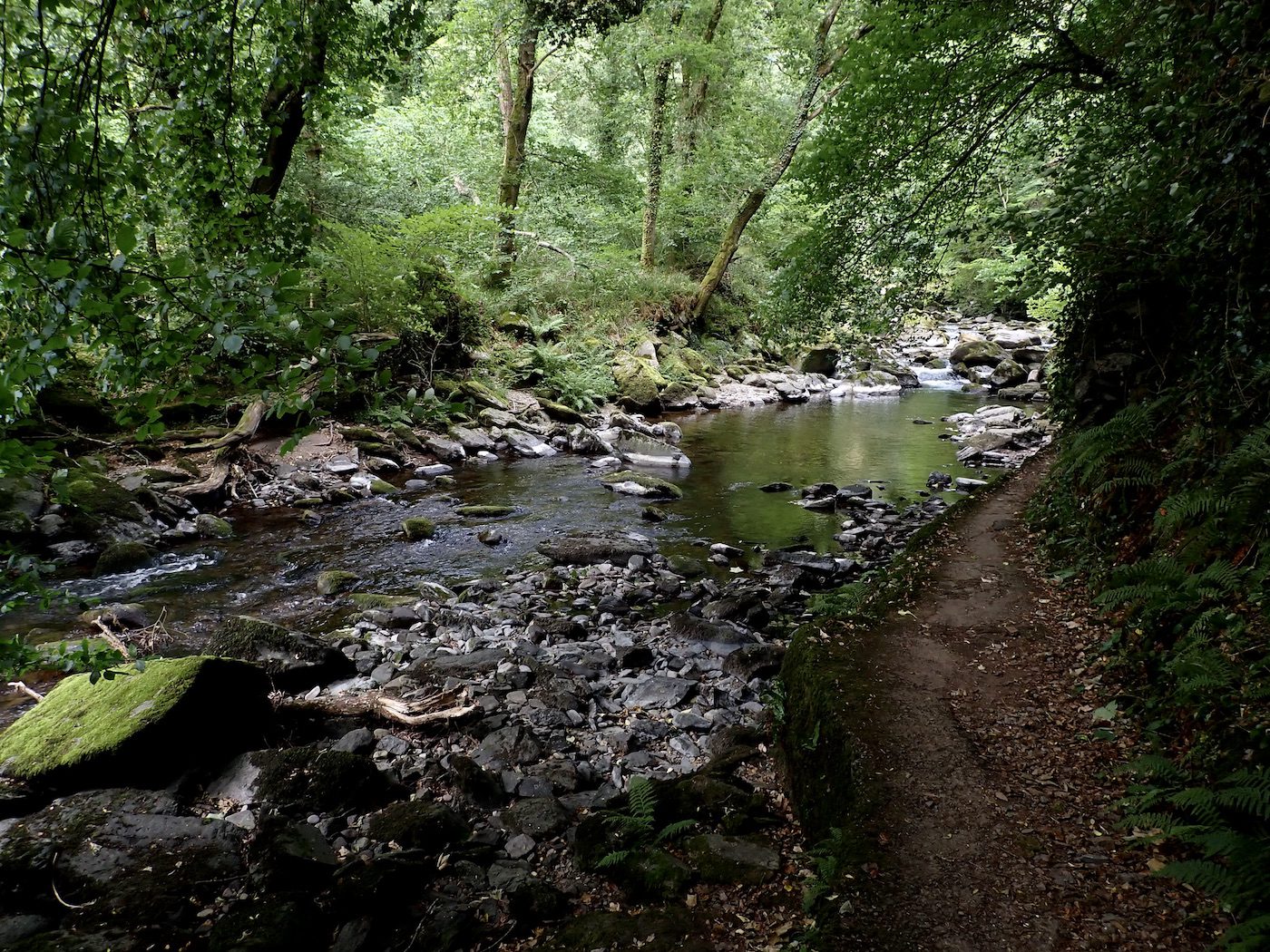
Hi Darren,
Thank you for your email it is really good to get positive feedback regarding my book and the website.
Would you mind if I publish your email on North Devon Angling News with my own thoughts as set out below.
As regards the East Lyn many of your comments mirror my own thoughts.
There has undoubtedly been a dramatic decline in salmon and sea trout runs on the East Lyn and the vast majority of West Country Rivers.
I have witnessed the decline on the Lyn first hand and it has to be appreciated that the decline that I have seen is based upon just over forty years and that my own baseline would have been much depleted in comparison to an angler who had seen the fish that ran the river forty years prior to that.
The facts on the Lyn and other rivers are to some extent blurred by a reduction in angling since the introduction of catch and release. In the days of prolific salmon runs there were also large numbers of anglers fishing the river. The angling community that once fished the Lyn came from far and wide when conditions were right and I met many anglers on the river who had commuted from London and other areas. These were familiar faces who joined the locals on the river bank jostling for the best spots. I often walk the river and now I seldom see a salmon angler even when conditions are good. Last week I spotted a good fish of 9lb plus resting in Overflow pool and feel sure there would have been other fish present.
Like you I do not believe the River Lyn has significant issues regarding pollution, Water Quality or indeed salmon farming.
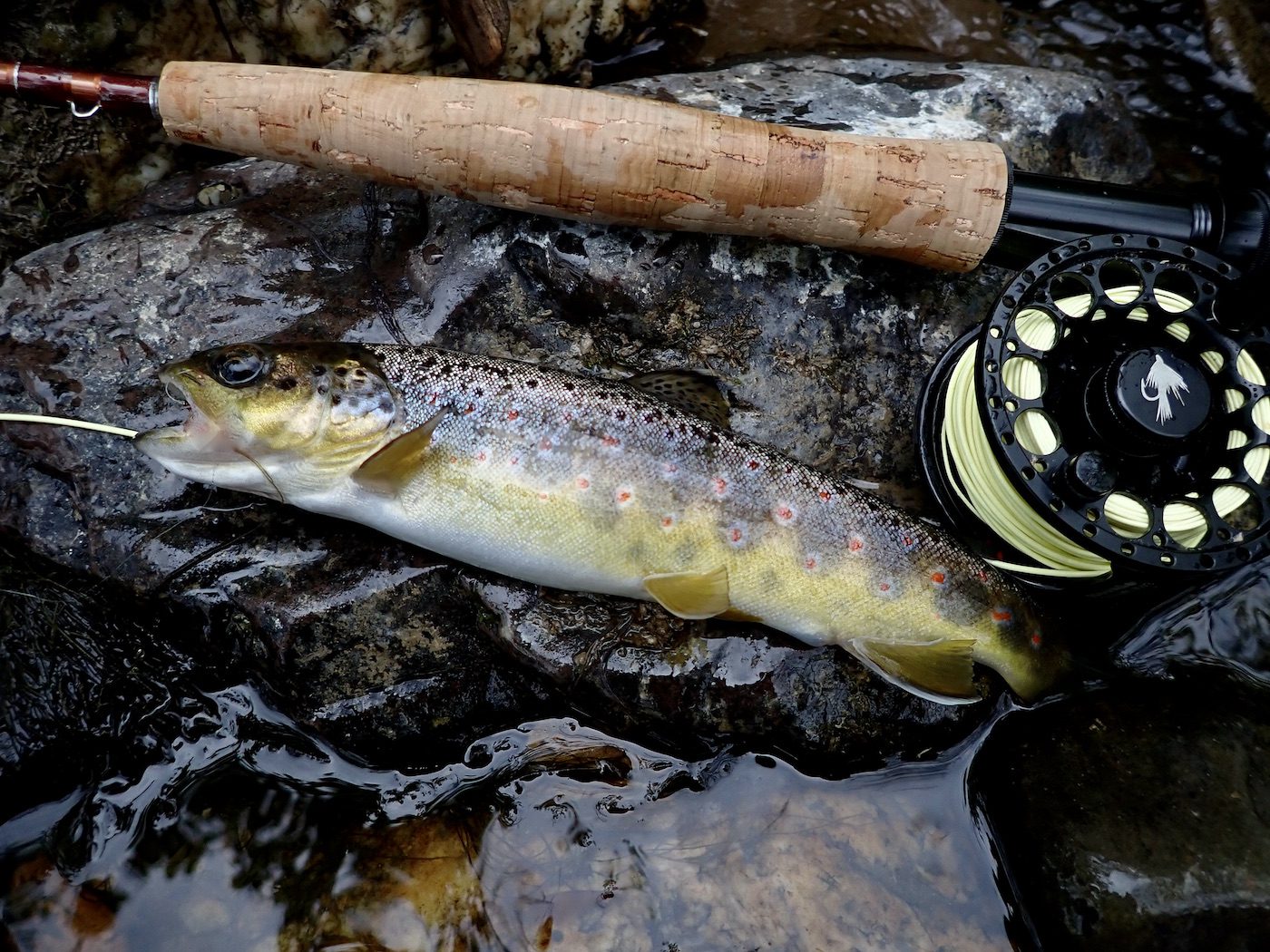
It is likely that the most serious issue is loss at sea. These factors could relate to the marine eco systems that are in turmoil as a result of climate change, overfishing and an imbalance in predation.
Climate change also impacts upon the spawning of salmon and survival with many scientists predicting that water temperature will be too high for salmonoid species to successfully spawn within the next forty years. Others predict the virtual extinction of salmon within the next twenty years.
One regular angler on the river tells me that otters are decimating the remaining salmon stocks on the Lyn and I have heard of many otter sightings on the river. During drought conditions there are often seals around the river mouth feasting upon salmon, bass and mullet. The juvenile salmon ( smolts) are also heavily predated upon by cormorants that lurk in the river mouth particularly during the spring months.
Another major factor that impacted massively on salmon numbers was UDN during the 1960, 70s and 80s. There was also a recent outbreak of disease that resulted in a large loss of spring run fish.
The reasons for the decline in salmon stocks are undoubtedly complex and I see little reason for optimism though nature has a habit of bouncing back if given a chance. Everything we can do might help, reporting pollution, working with River Trusts and highlighting the decline of an iconic species. It is tragic that the salmon stocks on the Lyn were once so prolific that they could be harvested by anglers and via the salmon trap at the mouth of the river. For many years stocks seemed to be abundant and seemed to bounce back from UDN and natural weather patterns etc.
Across the natural world there has been a catastrophic decline and salmon are just another indicator that all is not well with our world.
As regards to sea trout I have never understood why they are not caught on a regular basis in West Country estuaries. They are as you say caught in Scotland, Ireland, the Hebrides and across Sweden etc.
Best Regards,
Wayne
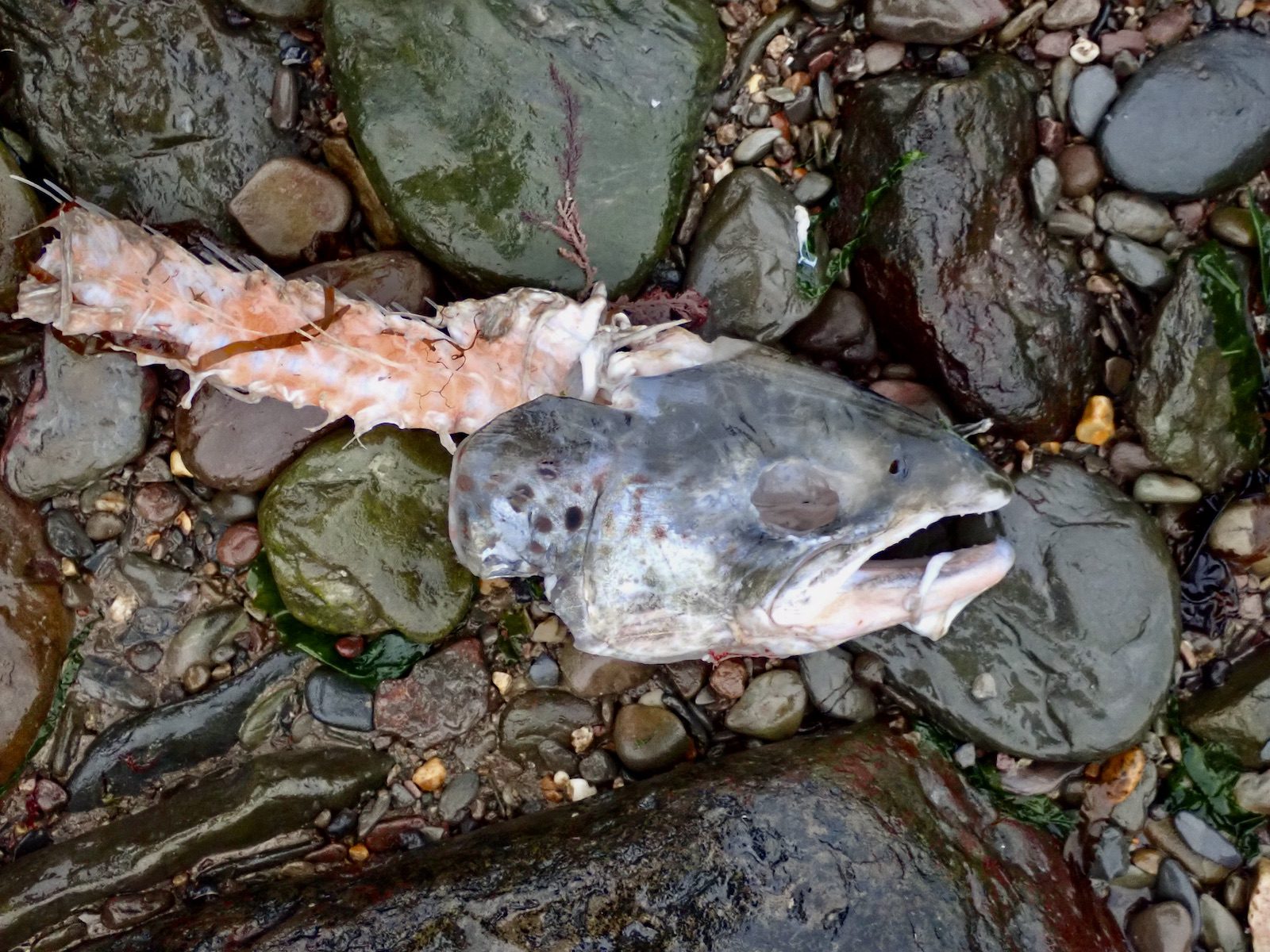
Later this Autumn Medlar press are publishing a book that promises to deliver more information and thoughts on the history of Exmoors Rivers.
https://www.medlarpress.com/code/bookshop?store-page=Song-of-the-Streams-p547451092

I REMEMBER WHEN
The old guy said,
I remember when the salmon poured into the pools,
Packed like sardines you could have walked across their backs, (1983)
I remember when some anglers caught one hundred salmon in a season, (2003)
It’s been a better season we caught forty from the river last year, (2023)
I remember when there were salmon in the river, (2043)
I remember being told there were once salmon in this river, (2063)
I met Barry Bassnett on several occasions whilst fishing for trout at Blakewell Fishery. We exchanged stories of angling in North Devon and I was delighted to record some of Barry’s recollections in my book “ I Caught A Glimpse”. Barry recently expressed his opinion on fishing styles after I posted an image of static fishing. Fishing methods can to an extent be split between a trapping approach where the bait is positioned whilst the angler waits for an audible or visual indication before reeling in the fish. The other approach is to hold the rod and feel for the electrifying pull as the fish moves away with the bait or lure the angler driving the hook home with a strike. Many thanks to Barry for allowing me to reproduce his comments and recollections.
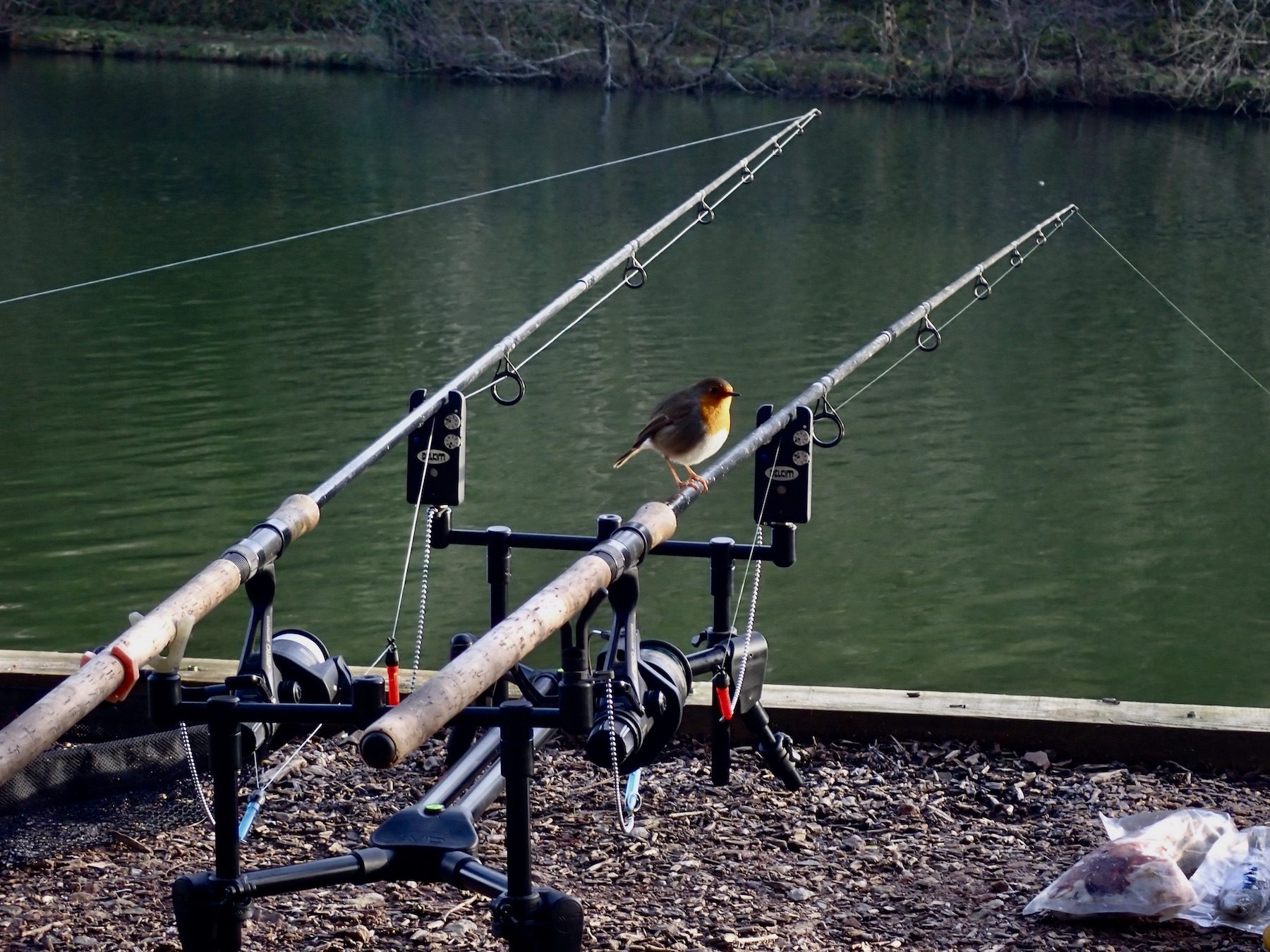
I use both approaches depending upon my preference or to what I think most likely to succeed. I remember my father preferring to hold the rod at all times waiting for that magical pull transmitted through the line. Barry’s comments and recollections are reproduced below.
A musical fish perhaps. Ha ha. But I can’t just sit there. Waiting for a buzzer to go off. It would drive me mad!!
I also can’t sea fish with a rod rest. I like the feel of a rod in my hand waiting for the bite. I want to lure fish this next summer. I’m hoping my neighbour Andy. Across the road will help me get started and I want to get out on the Lyn again .
I found out I’d got a Morecambe book about fishing. The Morecambe of Morecambe and Wise. It’s a brilliant book
And a great read.
I also have somewhere, an old book of old salmon fishing flies. I’ll have to try and find it some time.
Does Barnstaple have an angling club. And if it does what waters do they have and do they have many waters. And sections of the club is coarse fly and sea. Included.
Barnstaple & District Angling Club
https://barnstapledistrictangling.co.uk
Do you remember Bill Leg? A chap I fished with many many years ago.
We were with Owen another friend. It must have been in the seventies. We went to an open sea competition at Saunton. And there was a severe gale blowing. They decided to stop and cancel the competition. But our bunch decided they were all soft. So, we had to wade all the way to where we decided to fish .it was extremely hard going even up on the dunes was deep sea water. The wind was so strong. All along the beach we were wading in our waders. The water knee high.
When we decided we’d trudged far enough to start fishing. We got set up with four ounce weights on the end and started to cast
But however hard we tried to throw the weights out they ended up on the beach behind us. The odd one did get into the waves a couple of yards out.
Of course, eventually we had to give up it was humiliating as we had told the rest we were going to fish it. As it couldn’t beat us.
It was a struggle to get all our stuff in hand and make our way back to Owens car. It seemed miles in the very strong gale. Walking against the wind. We got back to the car soaked and shattered. And totally beaten.
It was so great to be let out of the car outside my home.
And into the warm again.
I learned my lesson .
It was years after since I was young and had fallen into the river East Lyn. And spent the day with wet clothes on And soggy socks. Fishing.
But this experience was far worse. I don’t let myself get soaking wet now. I’ve a full waterproof suit now. That floats me.
Happy memories. I often sit and smile of my times in the water. When I’ve fallen in or been out in storms too stupid to give in and stop fishing.
And I now also stop fishing during lightening storms.
But in the early days I was using my mother’s old greenheart fly rod. That was safer it was only six foot six long and a great rod for under the low trees and bushes on the Lyn on our own stretch. Casting over my shoulder with my right hand. Holding the rod. That was back when I lived at Millslade in Brendon. I used to get a lot of free flies on the Lyn back then when there were loads of visitors staying at the Staghunters. And they used to lose their flies up in the trees and bushes from where I collected them.

Oh, happy days! Back then the Staghunter’s rented all the Halliday water . The water now known as the Glenthorne fishery was connected to Glenthorne down beside the sea below county gate. My great grandfather. Used to be the butler at Glenthorne before he bought the three cottages that he turned into the Staghunters Inn hotel in Brendon. Of course, that did mean I got to fish all of the East Lyn for free plus we had two fields with our own fishing with Millslade. It was paradise for me for all my childhood days. I so miss it now.
It’s such great memories. And I fell into the east Lyn many times. When I was young or got a boot full of water.
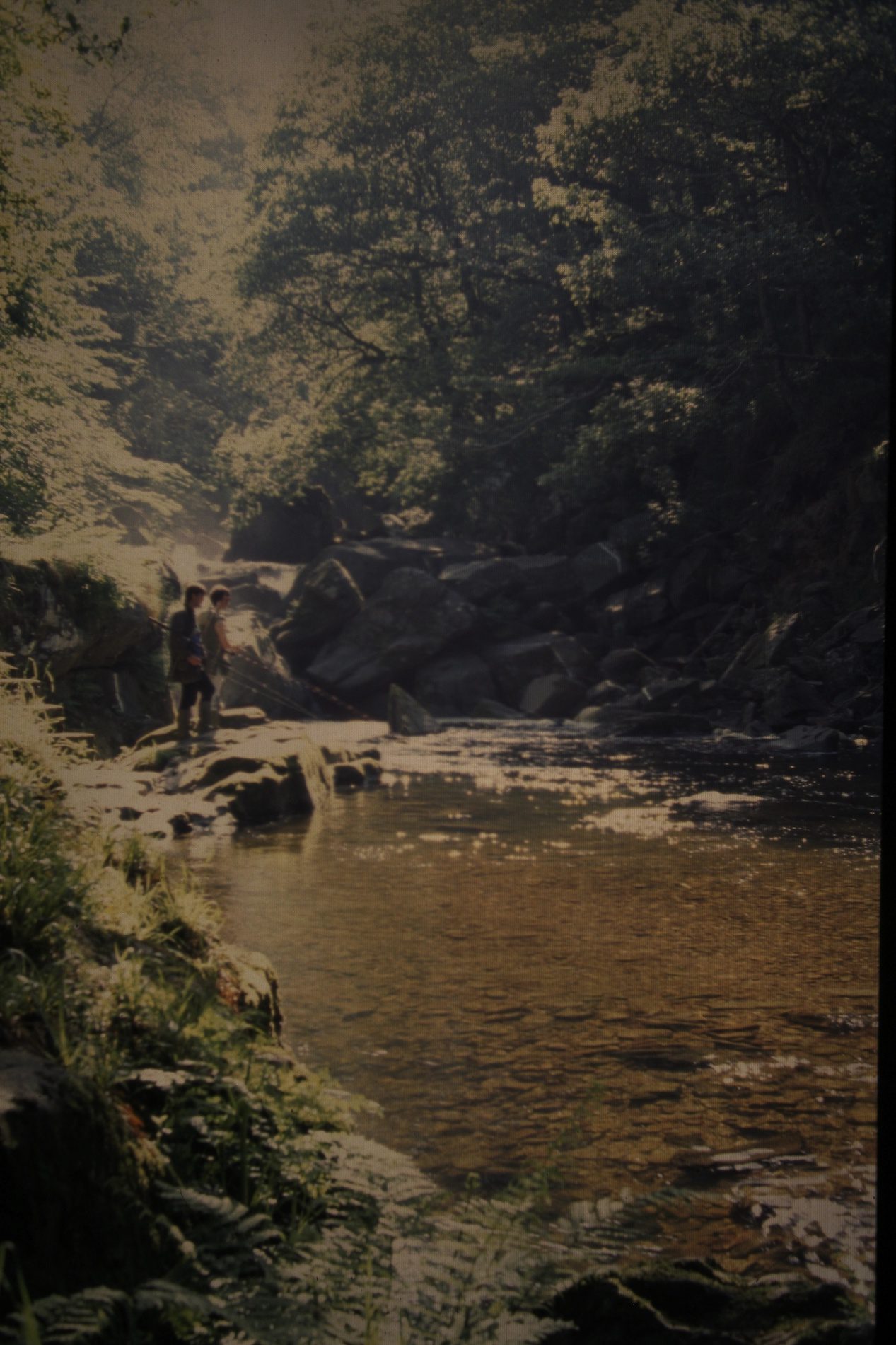
On one occasion I was in the field opposite Leaford. One field up and I was stood on a narrow pointed stone and one of the old hunter air craft flew up the valley extremely low. Just above me and I lost my Ballance. And of course, fell in. .and again was wet for most of the day. My feet didn’t dry out. .but if I went home to change my father would put me to work. Again. Mowing the lawn or gardening or cleaning the shippens out moved a huge amount of cow muck over the years. When I was young on to a large heap to rot down a bit for the fields and the veg garden .
Take care Barry
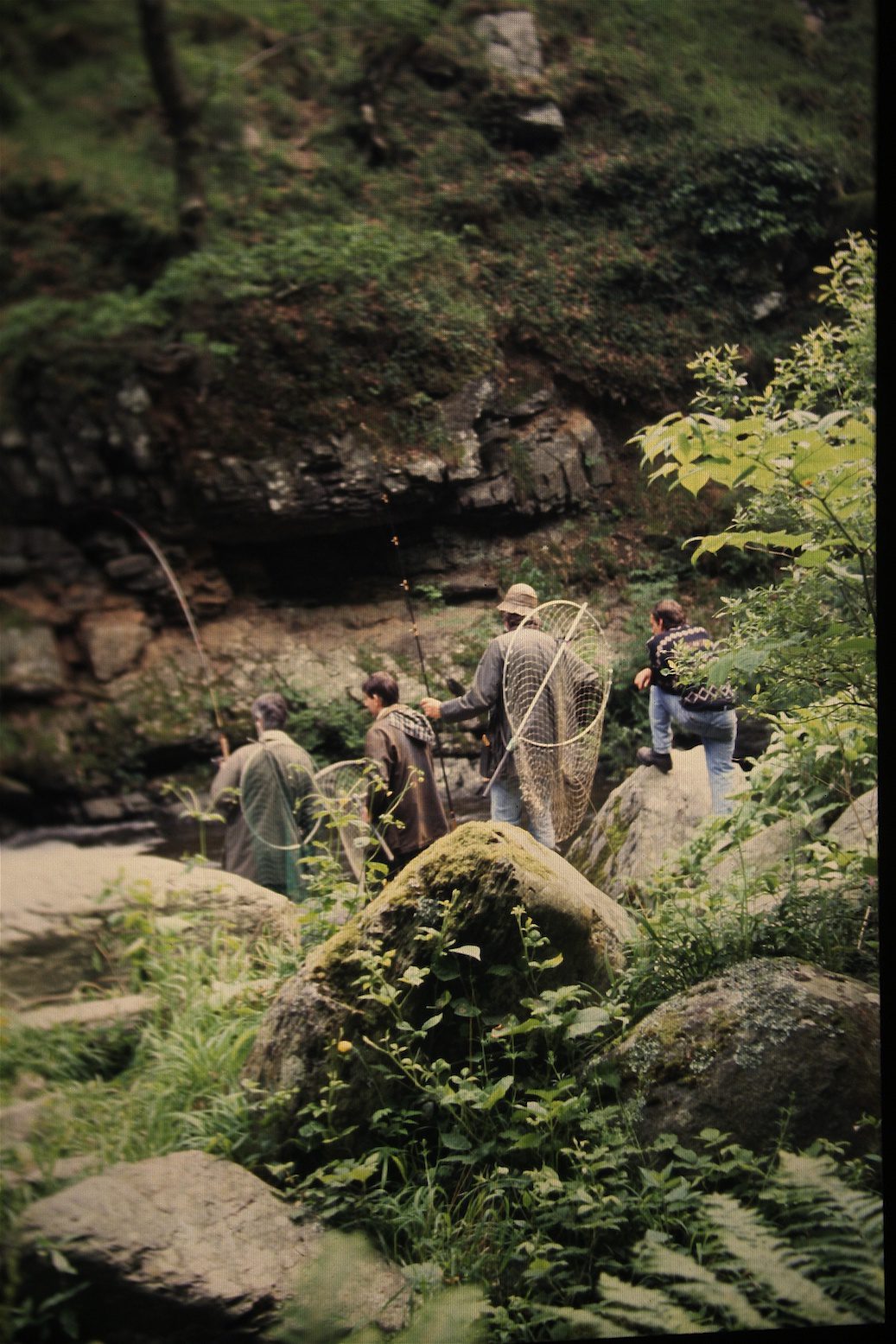
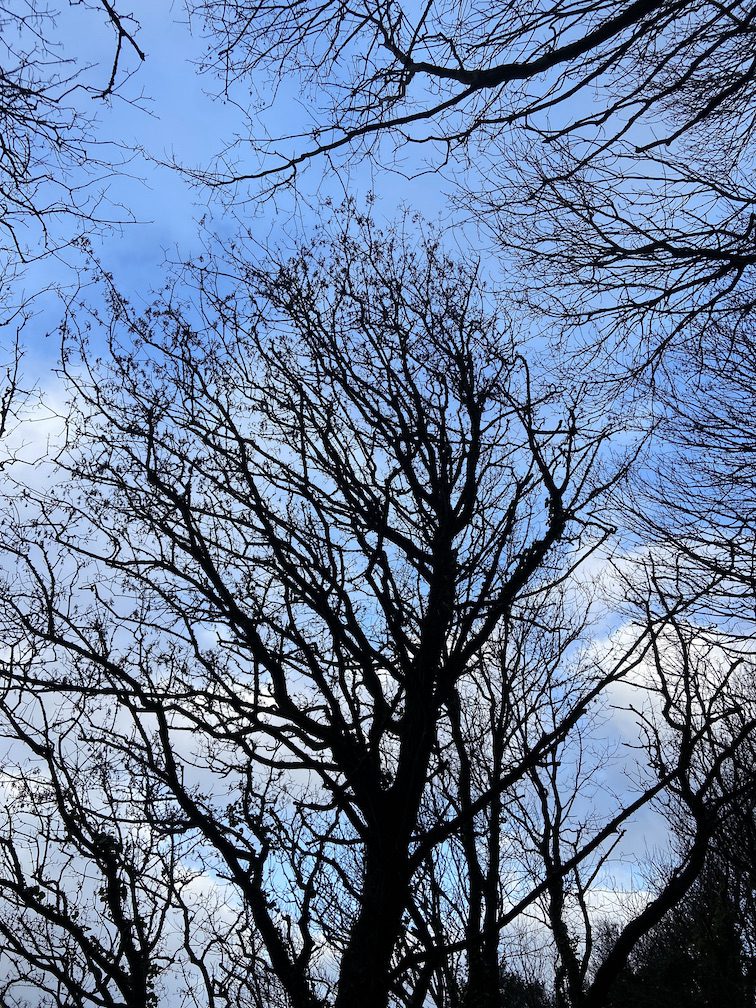
The Winter Solstice, light fades from the day and the natural world turns the corner. The journey towards Springs renewal begins again. I cannot understand why our own calendar is so out of sequence with that of the real world. The natural world we live in where the light is dictated to by the revolving world the moon and the sun.
Perhaps as anglers some of us are more finely tuned to the natural cycles of life. I certainly despair at what has happened so quickly. I first cast a line for salmon in the River East Lyn over forty years ago and in those first few seasons I was fortunate to connect with numerous salmon and glimpsed many more in the clear waters.
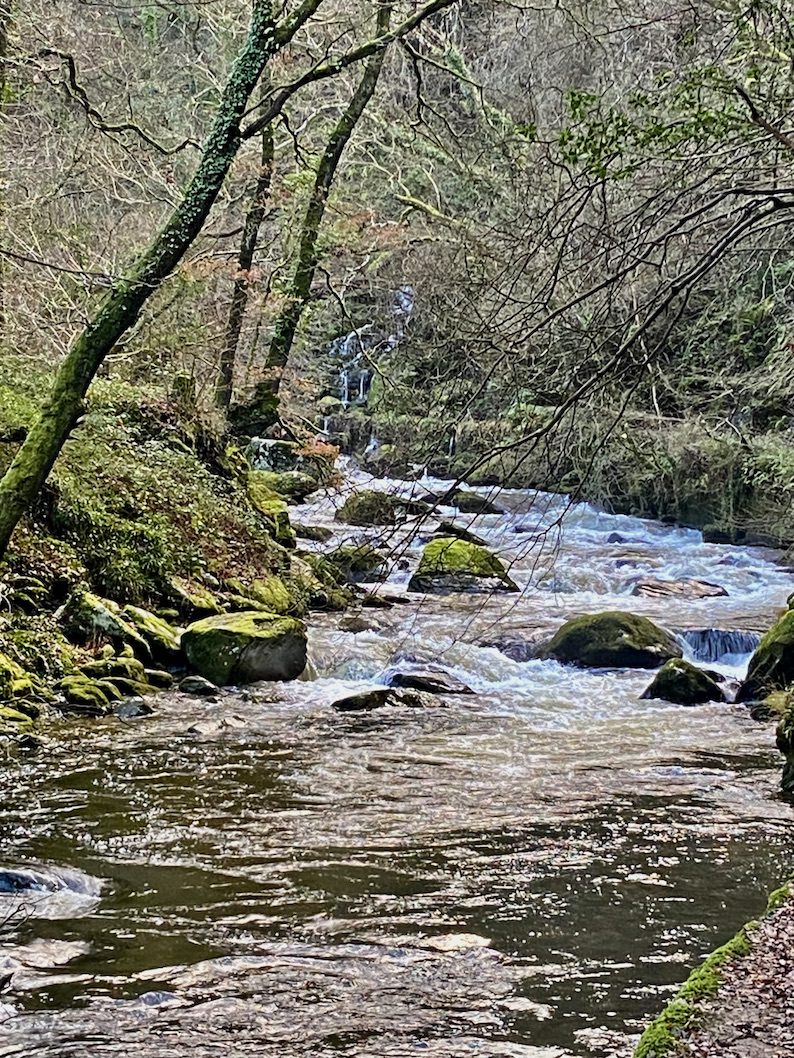
We walked the River today its tumbling waters rushing between boulders and fallen trees. The salmon should be spawning now; hopefully there are a few still cutting redds high up in many tributaries and head waters. I remember walking the river over thirty years ago in the depths of winter. Salmon were plentiful then with fish spawning even in the lower river. I gazed into the swirling waters of Vellacots today but sadly I saw no salmon.
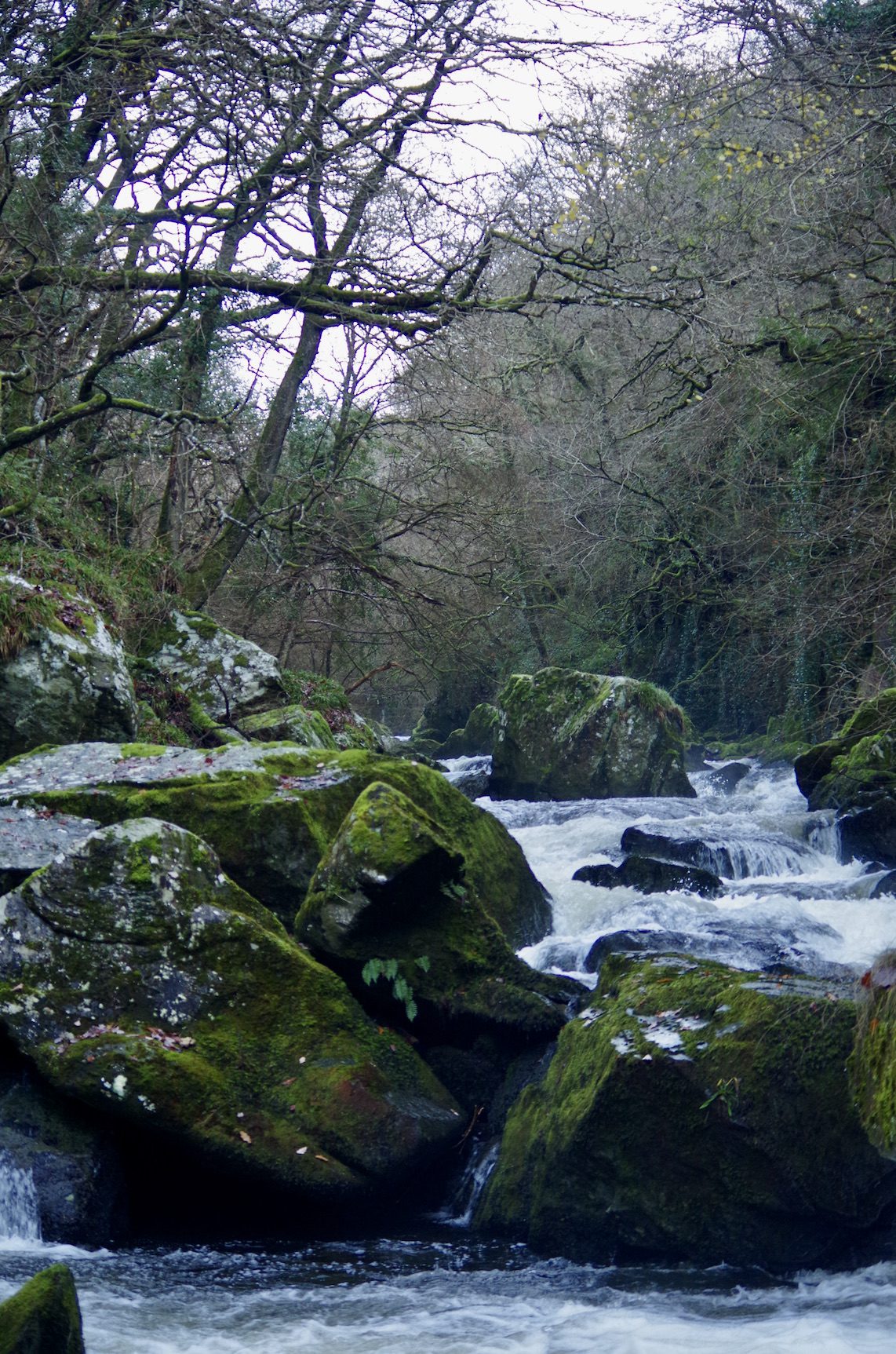
It was good to see the new signs on the River today highlighting the amazing life cycle of the salmon. The river is still a joy to fish and has a good head of wild brown trout.
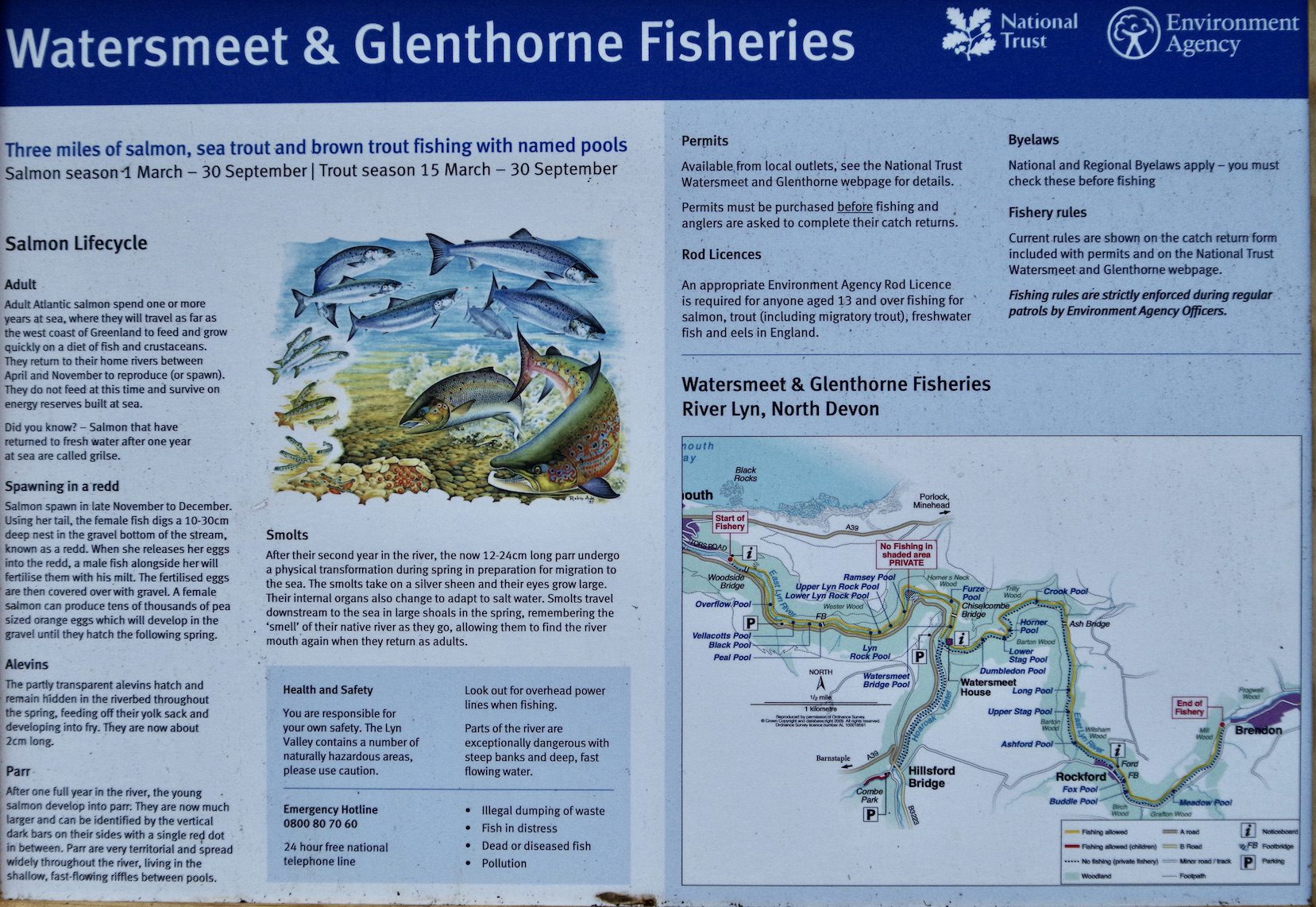
The reasons for their decline are both complex and many. Water quality probably isn’t a major factor on the Lyn. The main problems are probably out at sea where few salmon survive to return to the rivers of their birth. Predation by seals, otters, cormorants and other predators is undoubtedly a factor. The natural eco system is I believe out of balance and this has much to do with the hand of mankind. We exploit the vast oceans and seas depleting fish stocks and then do our utmost to protect the creatures that feed upon these depleted stocks. It is depressing to think that at the present rate salmon could be virtually extinct in South West Rivers within the next few years. I witness this dramatic decline in my lifetime and despair when I pick up todays Times newspaper. ” Conservationists have reacted angrily to the announcement that the target date for cleaning up the majority of England’s rivers, lakes and coastal waters has been pushed back by 36years to 2063.” FFs………
At least public awareness is growing regarding the rapid decline of the natural world. Is it too late?
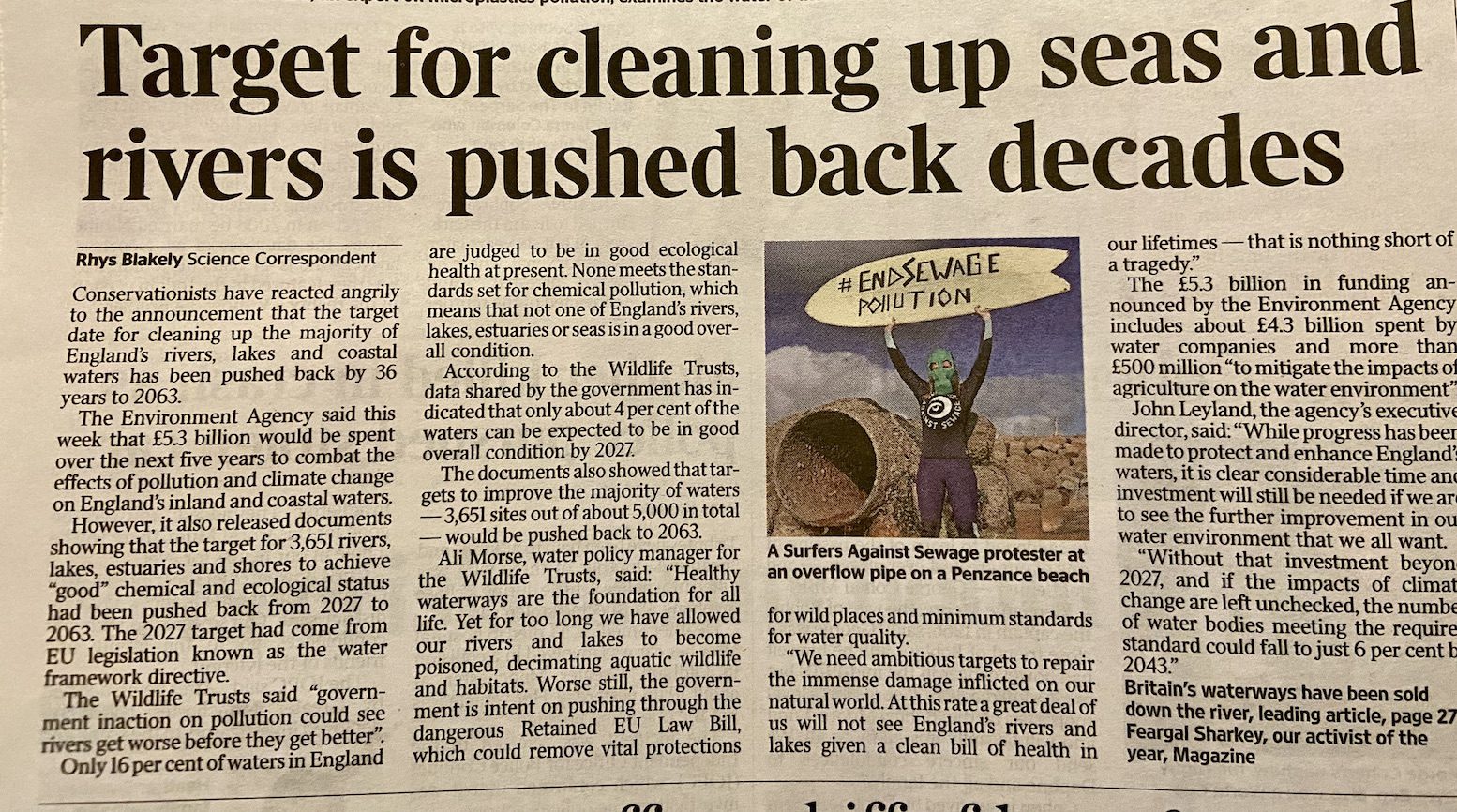
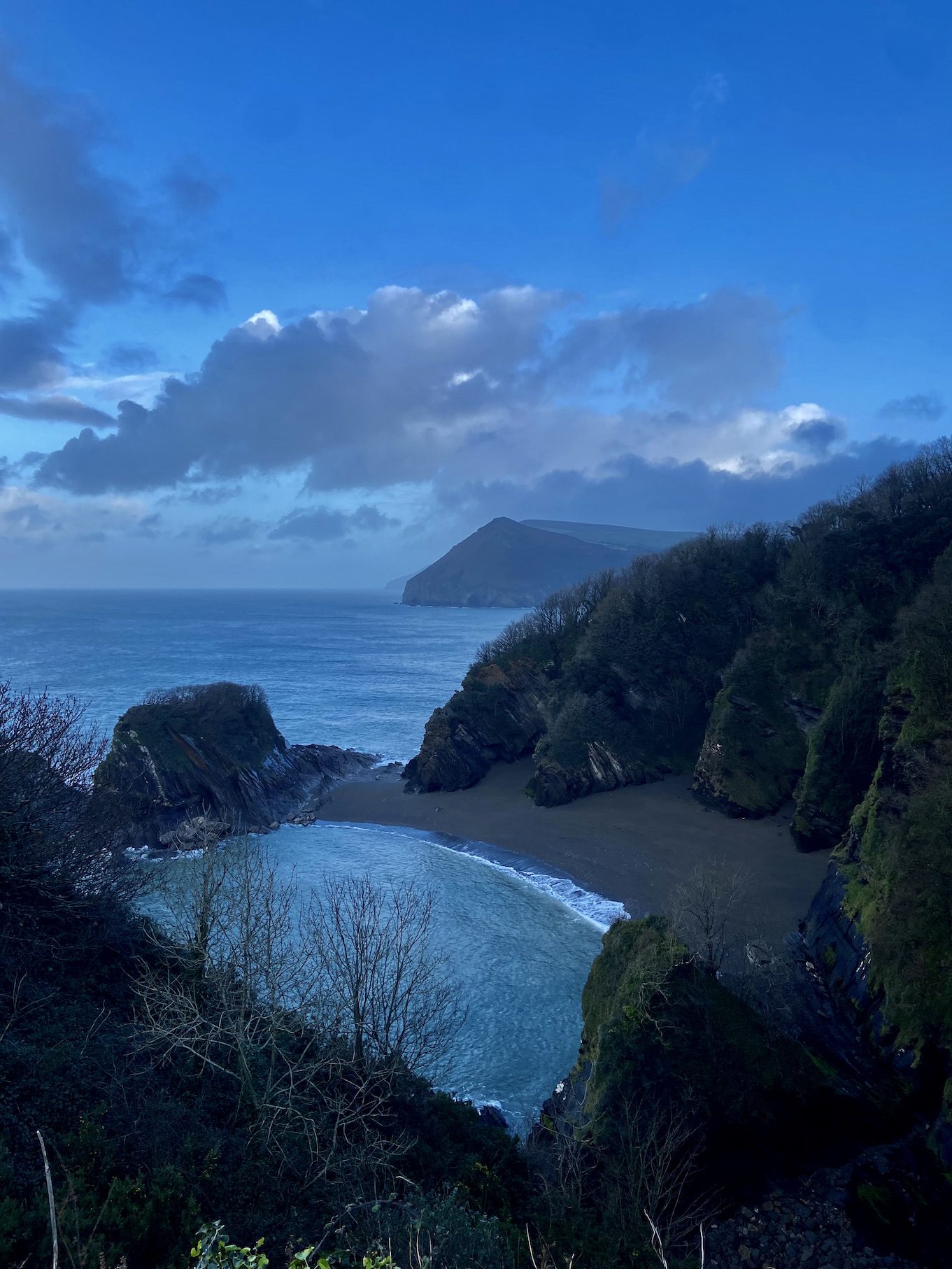
Another sad note I have witnessed in recent years has been the increasing barriers to accessing the coast. This is undoubtedly a result of an increasing population and the demand to enjoy the marvelous coastline. Inconsiderate parking of cars and the dropping of litter are contributory factors. A lack of respect for Private land and over zealous land ownership can also lead to confrontation. When I started sea angling access to many areas of the coast were open access. Today no parking signs and barriers seem to blight the landscape.
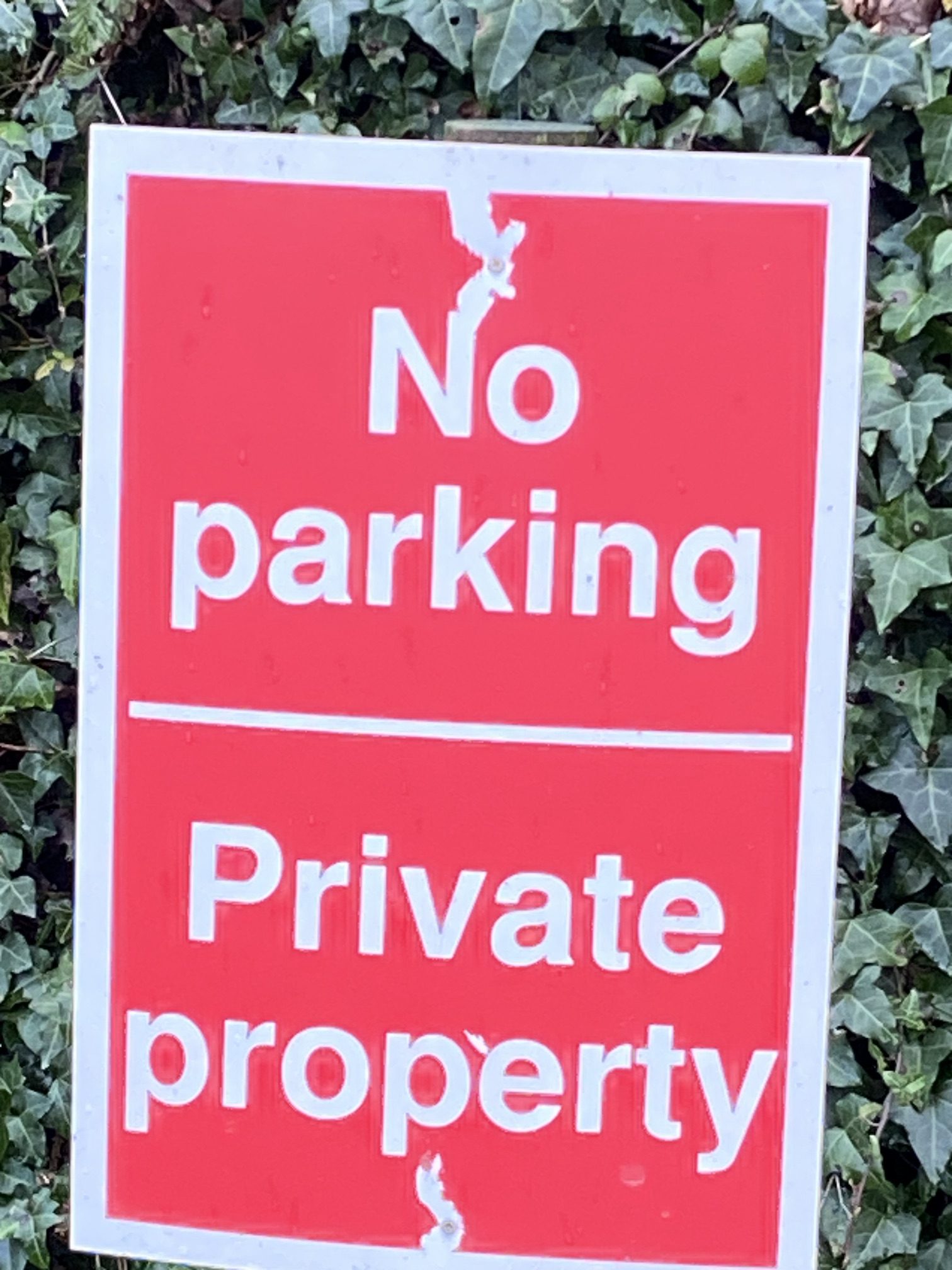
In some parts of the South West fishing marks have become no go areas due to anti social behaviour. I dont have the answers to all of these issues but a little more tolerance and respect for others would go a long way.
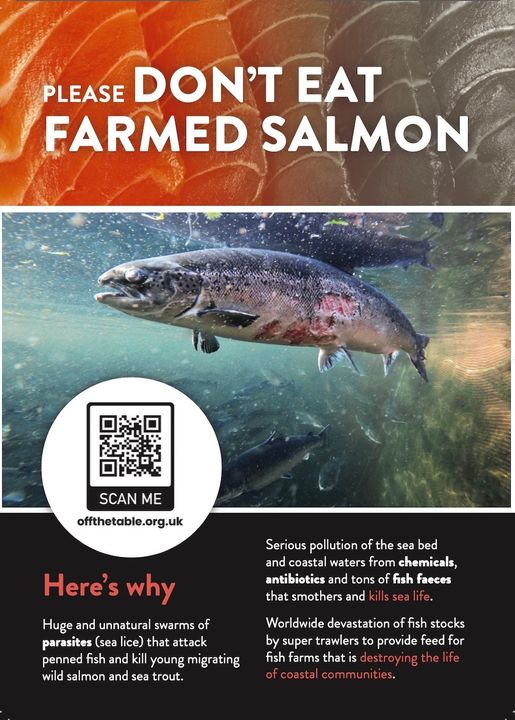
Dan Spearman enjoyed a session on the spectacular River East Lyn tempting a dozen of the rivers wild brown trout. The fish were tempted on nymph and dry fly tactics. The wild brown trout of the Lyn are surely amongst the most beautiful in the West Country. Dan was delighted to report that there was an abundance of fly life on the river during the evening he fished. The Lyn tumbles through moorland and wooded gorges and its water quality is not impacted by the intensive farming practices that blight many other West Country Rivers.
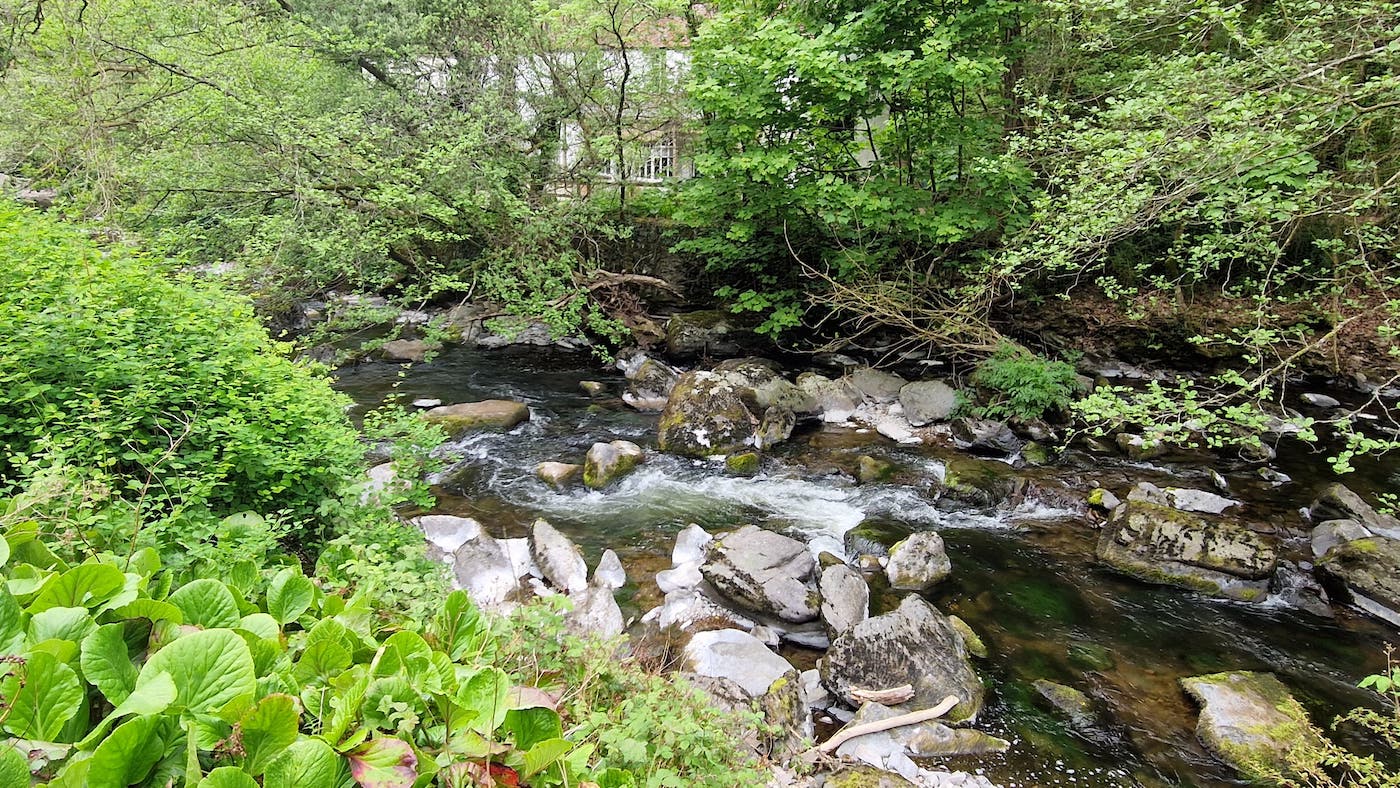
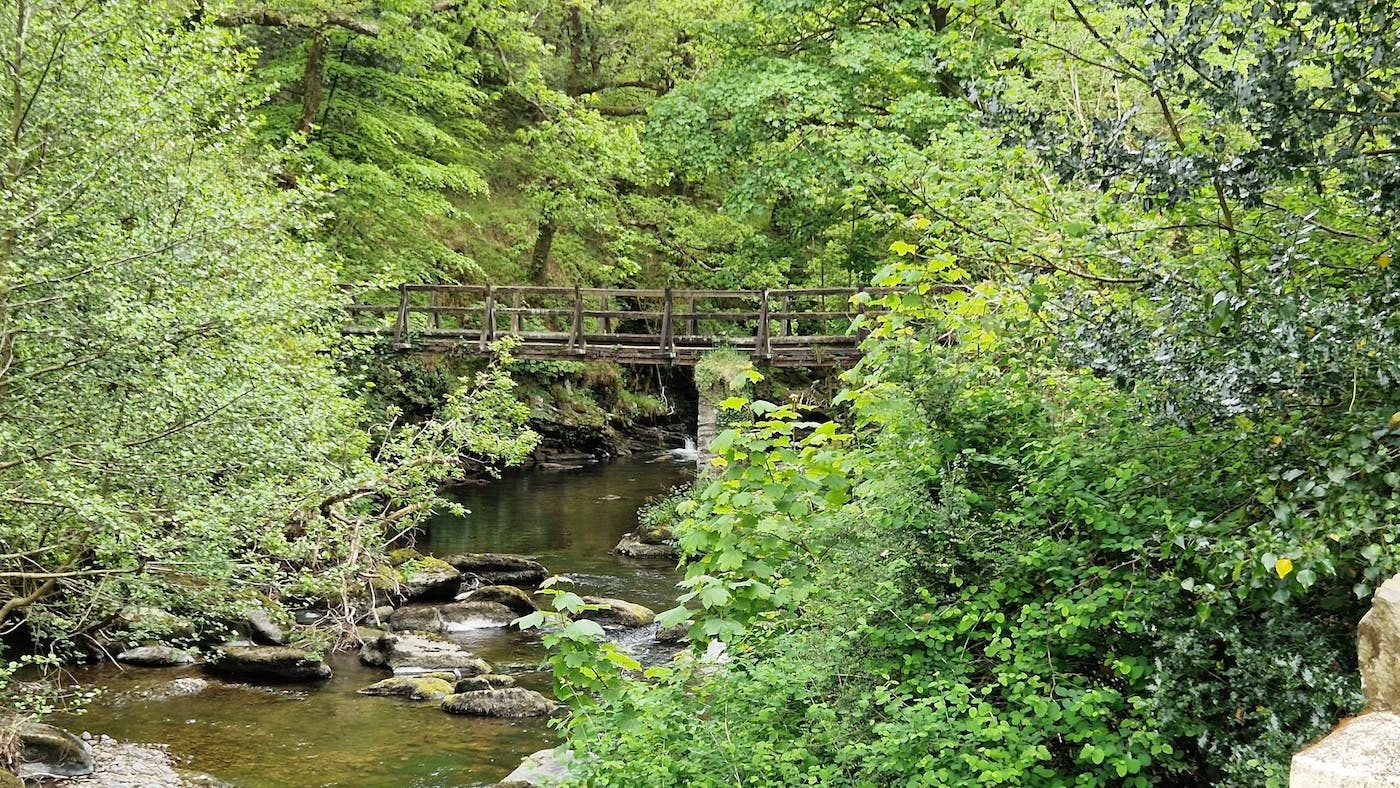

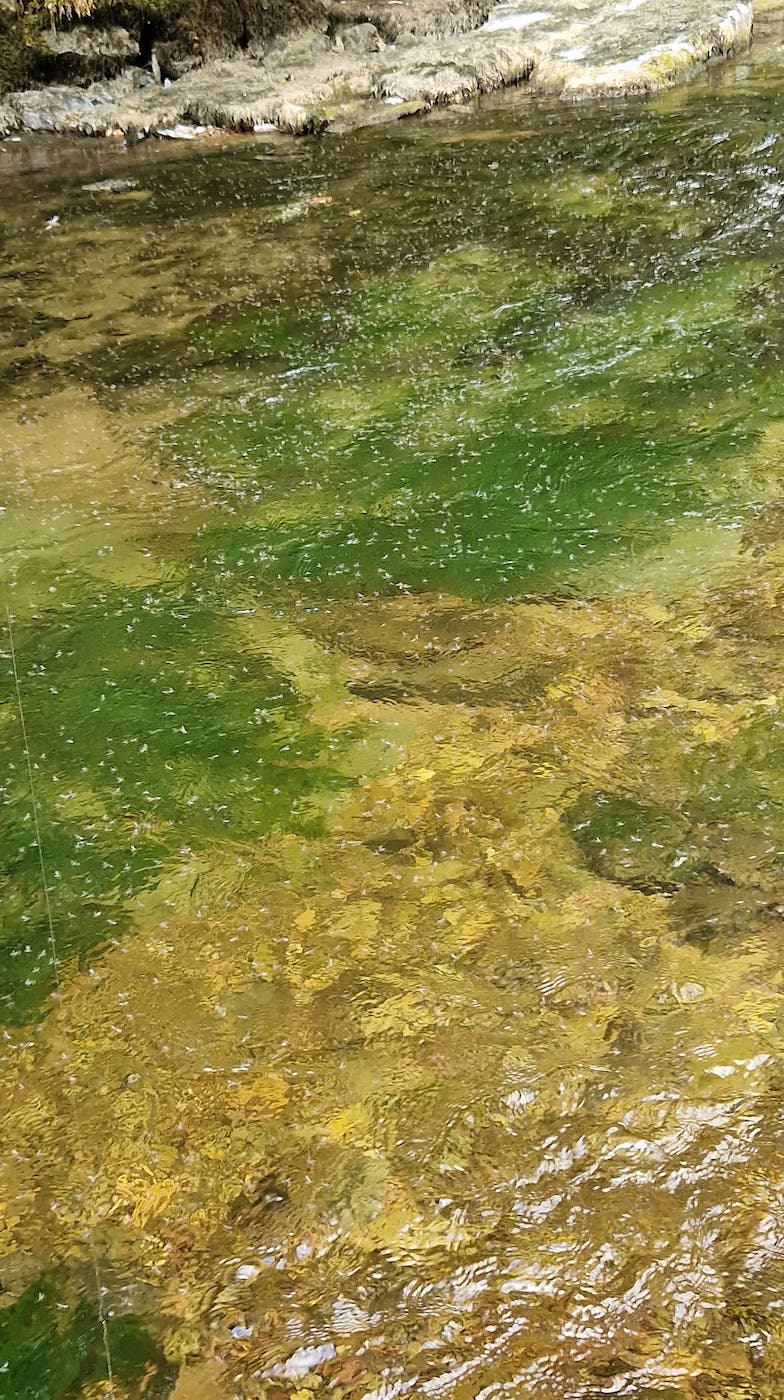
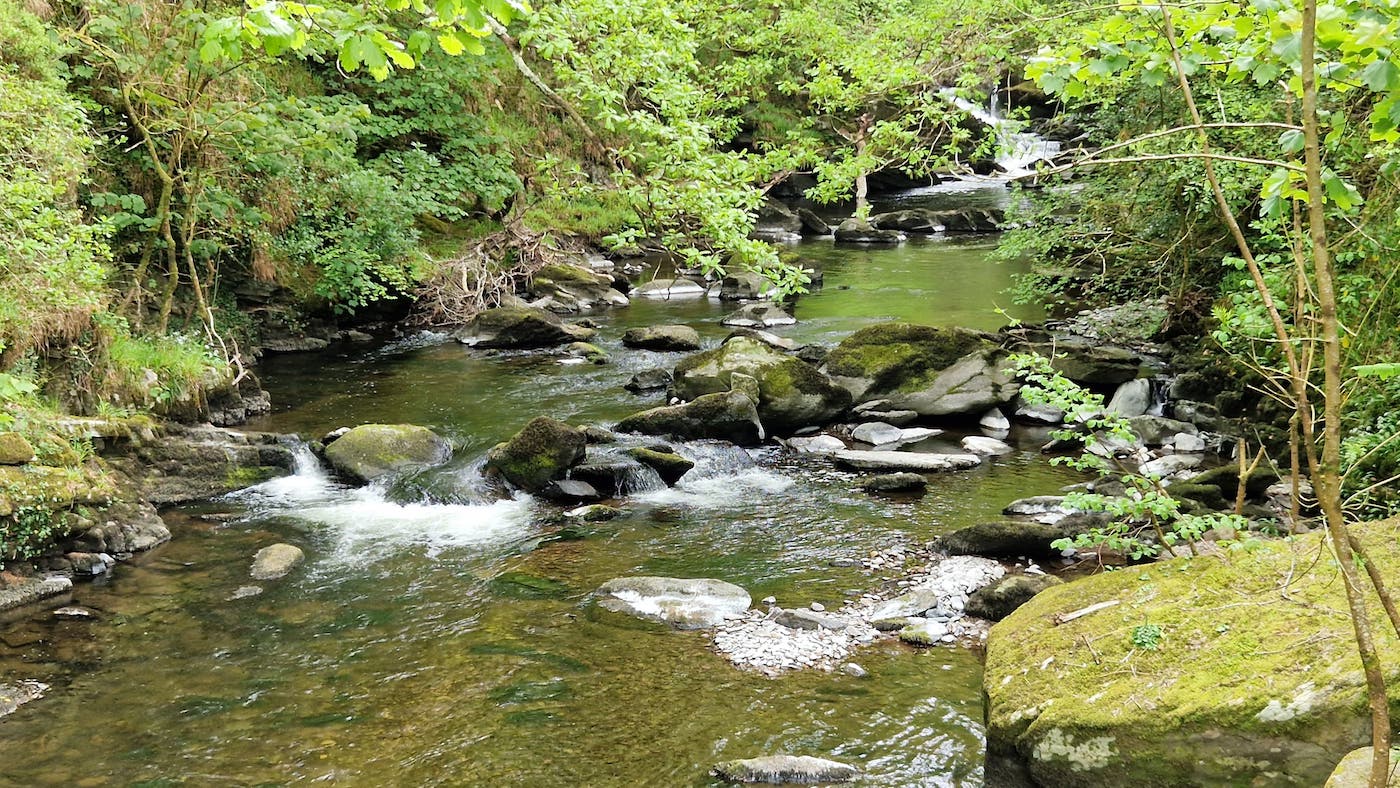
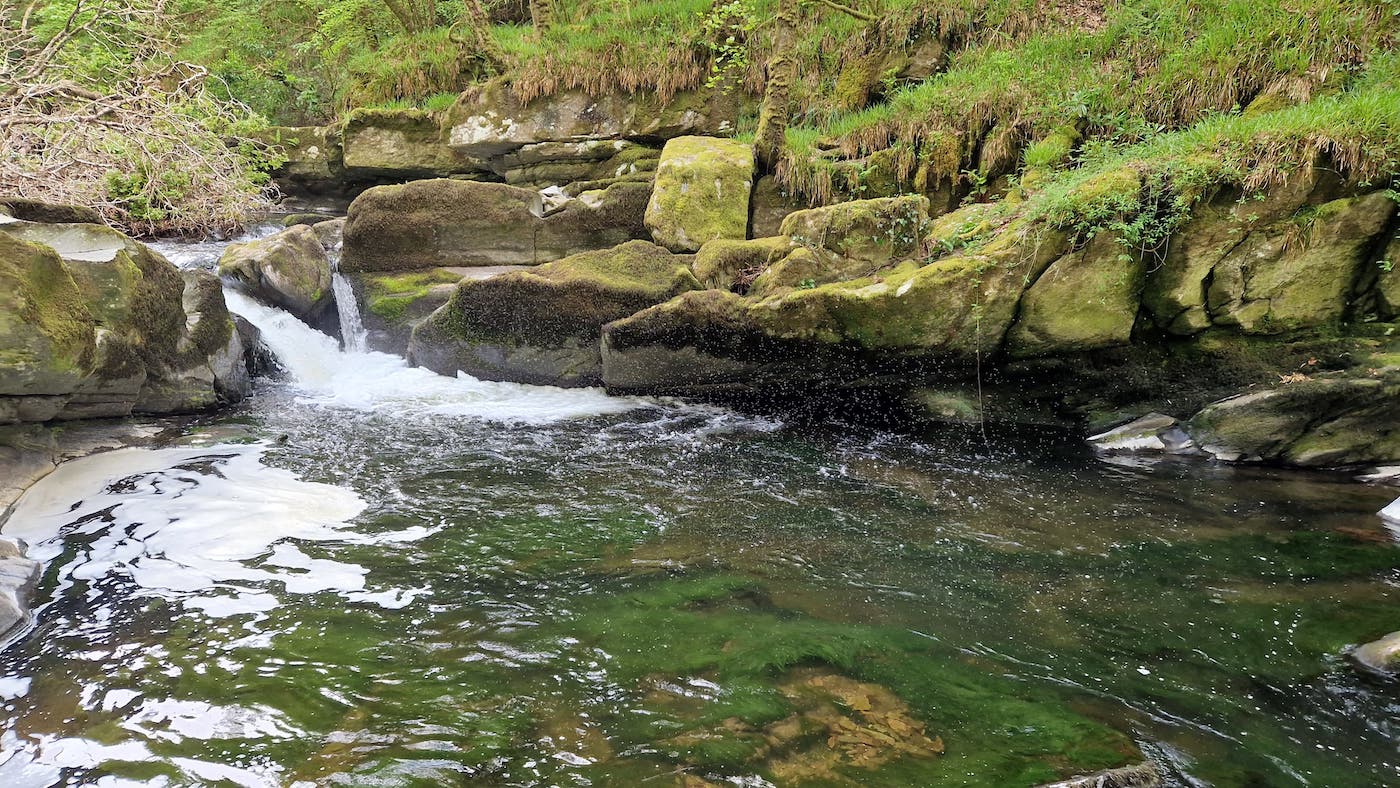
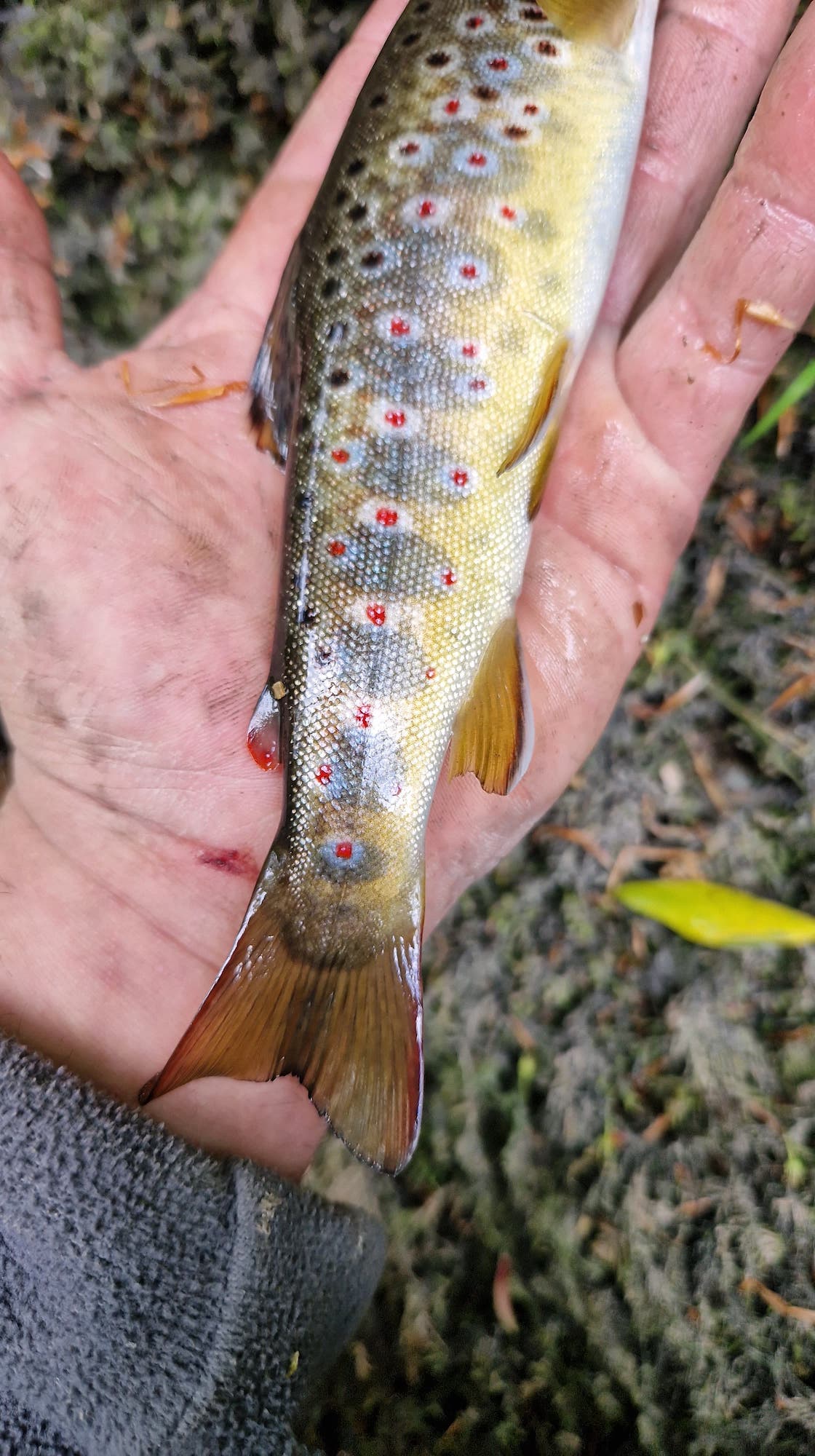
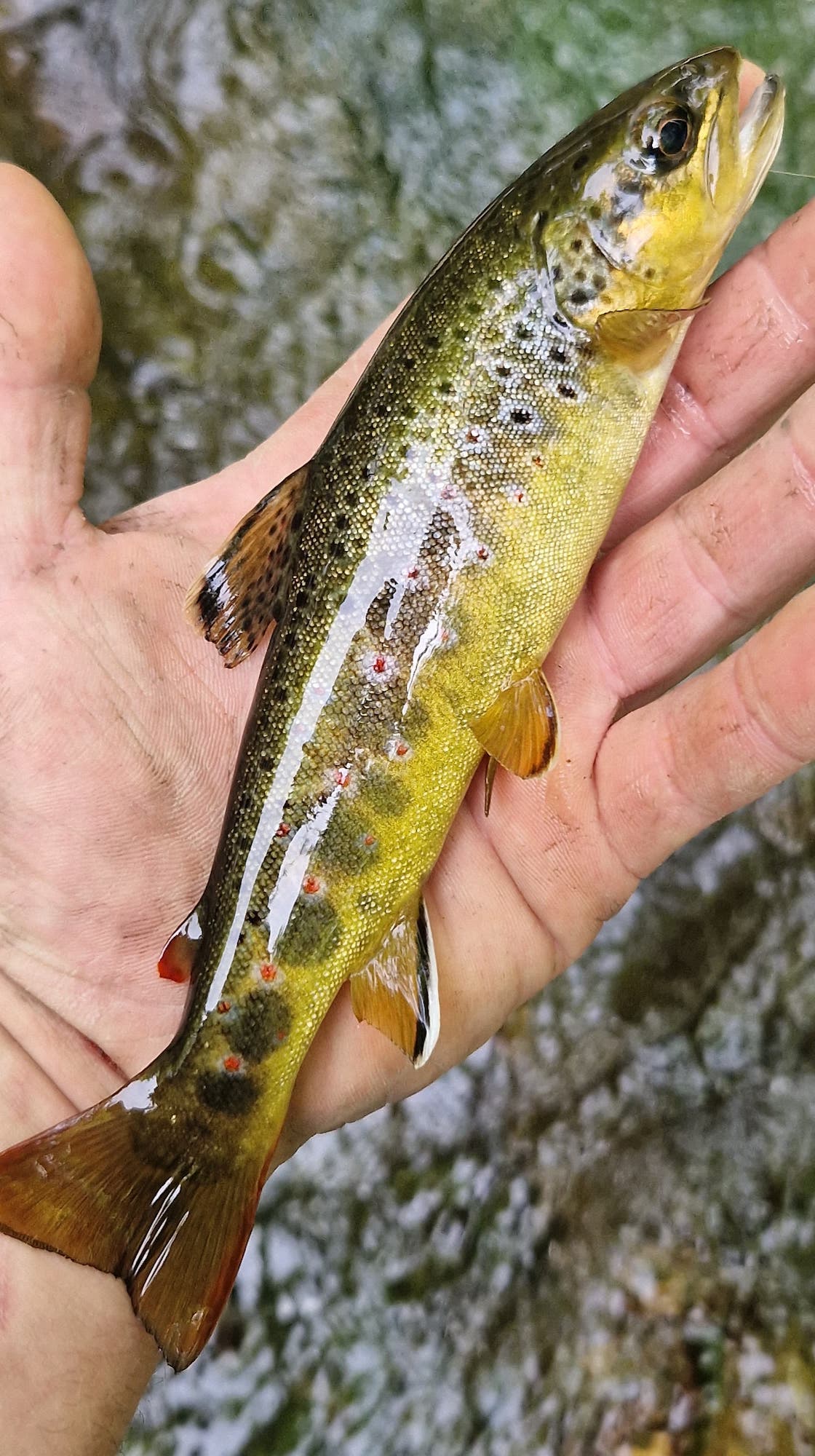
Many thanks to Dan for allowing me to use his stunning images.

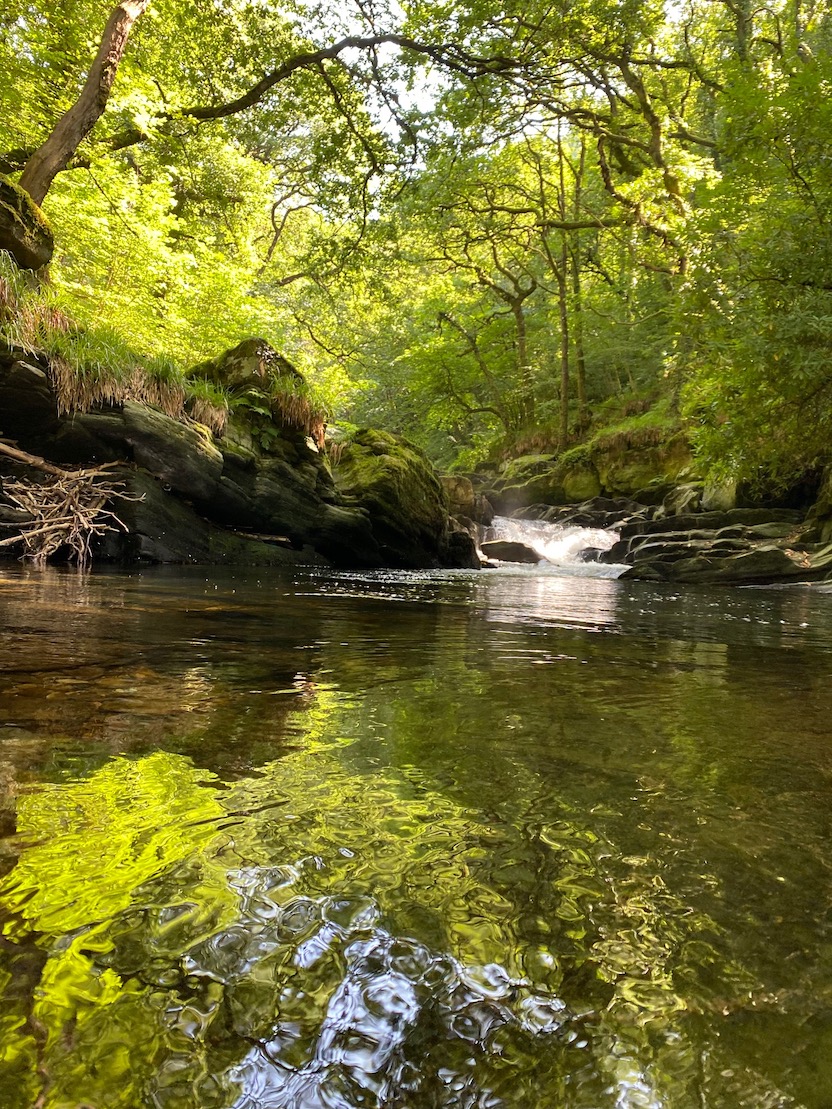
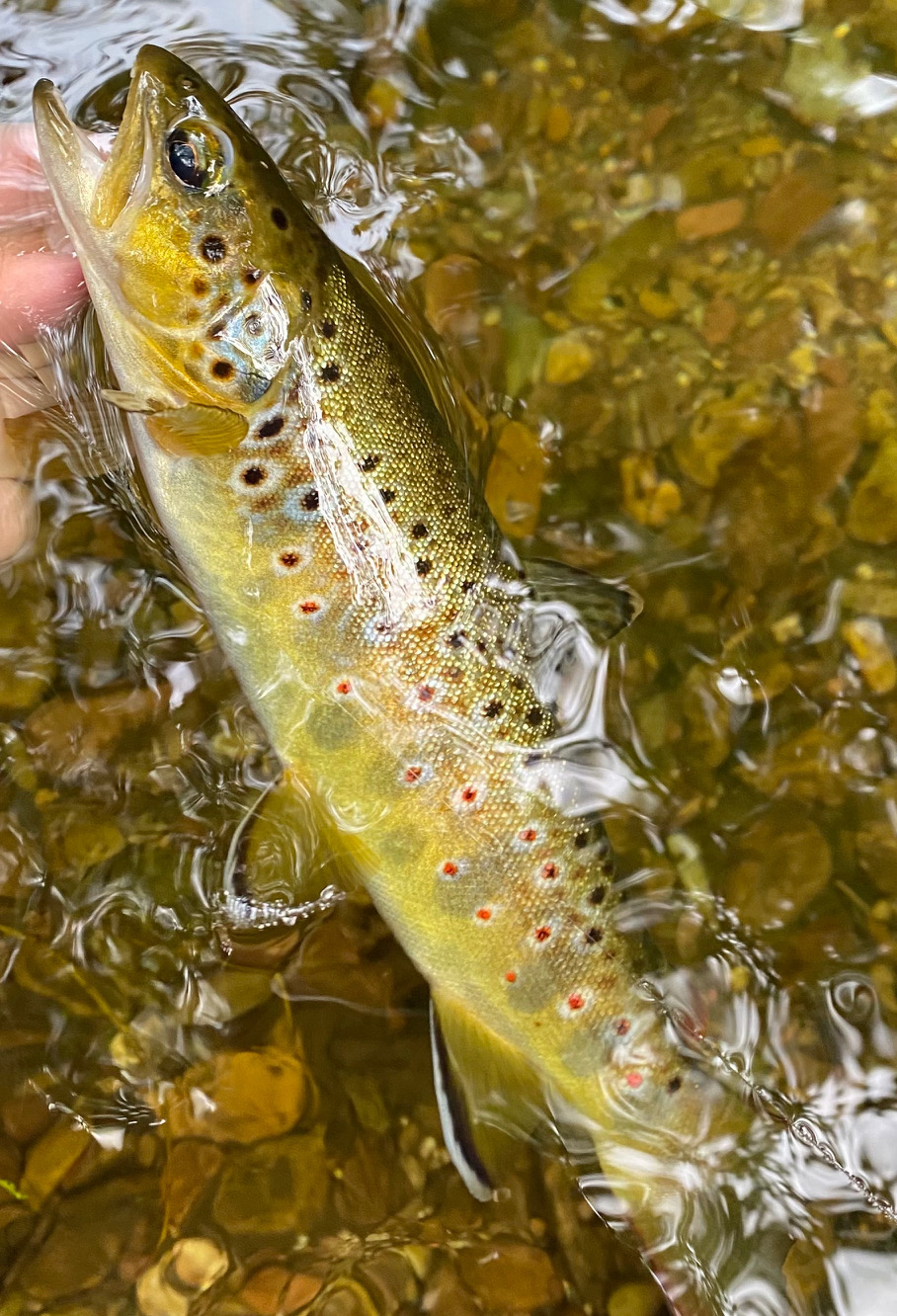
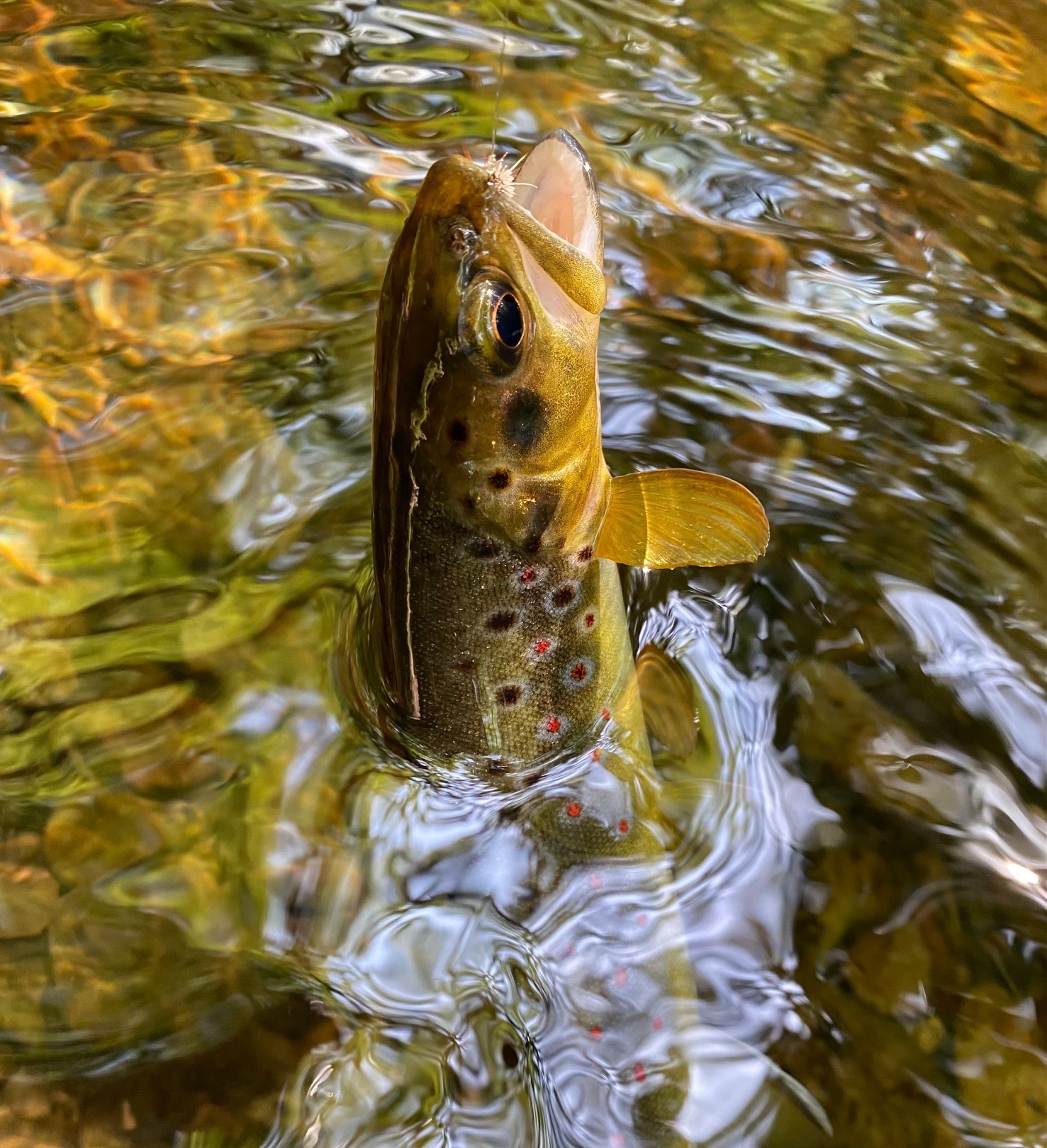
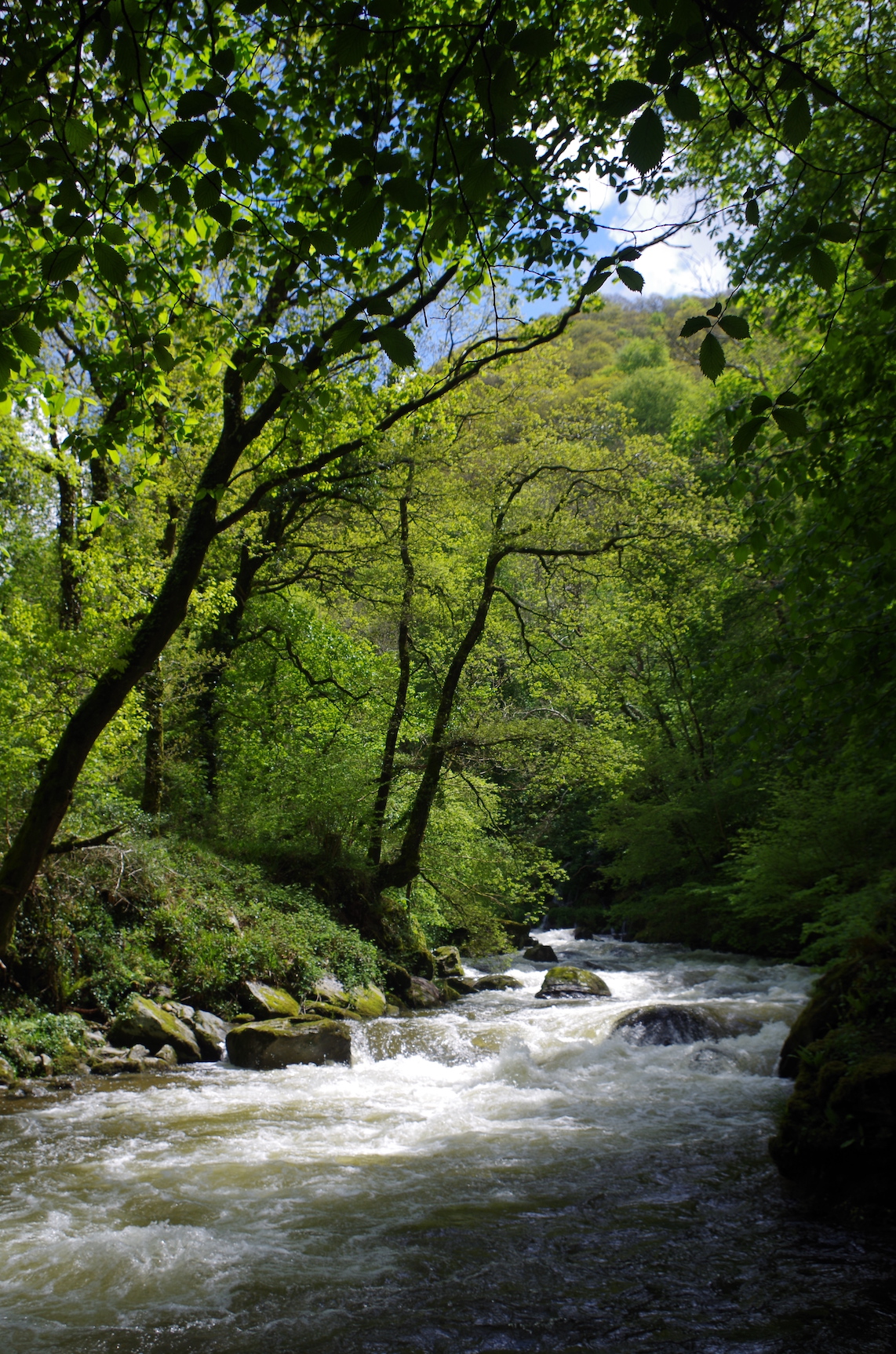
After the rain and clouds it is a relief to walk beside the tumbling waters of the East Lyn as they race towards the Bristol Channel. Over forty years ago I caught my first salmon from this river an event that is etched upon my mind. The numbers of salmon that now run this river have dramatically declined though of course as an angler I cannot help wonder what now swims within this raging torrent. It’s running too high to fish today as any fish hooked would surely be lost in the maelstrom unfair on the fish and pointless for the angler.
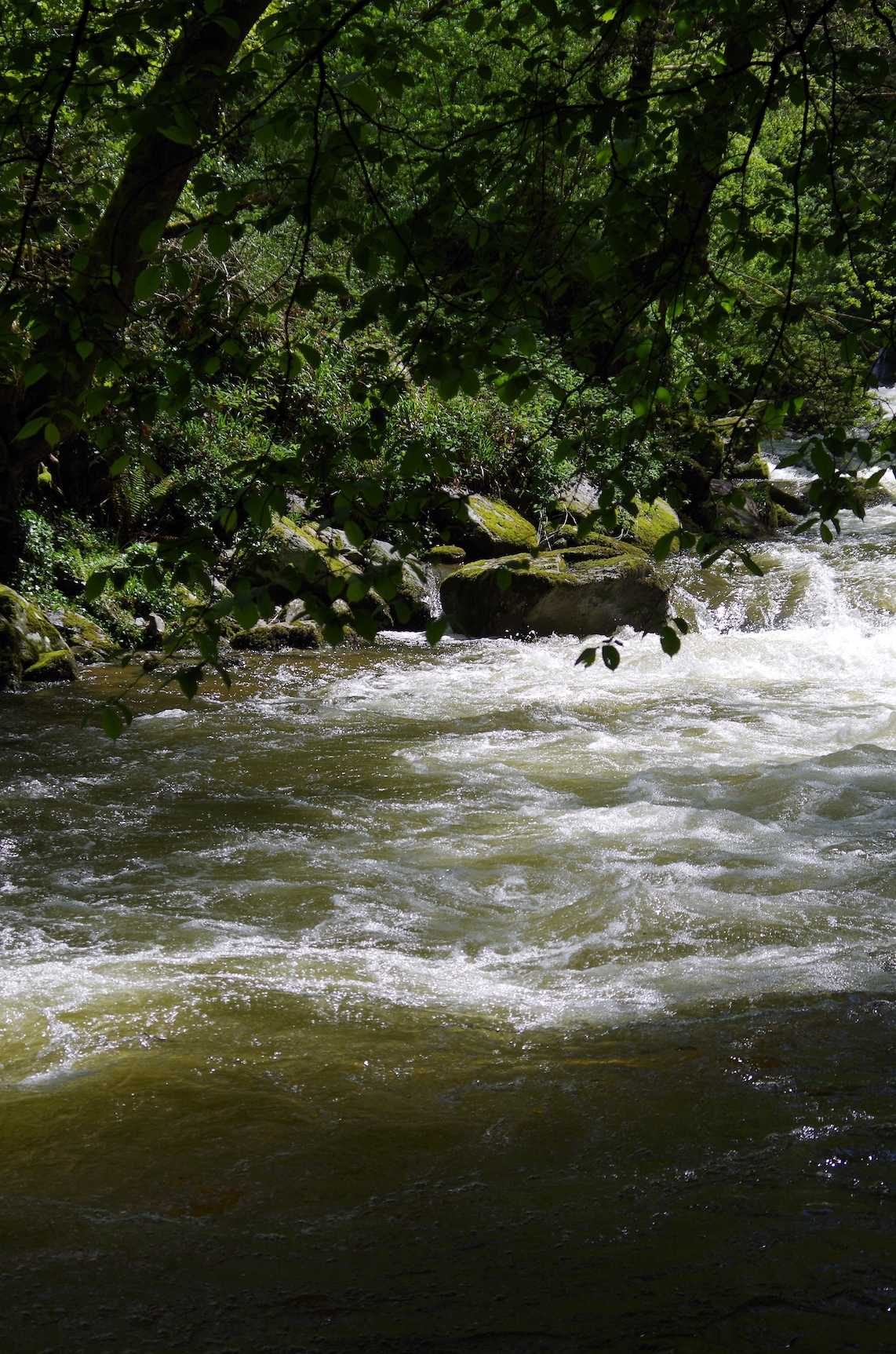
After one of the driest Aprils on record May’s rain has restored the balance and the coming weeks give promise across North Devons rivers with salmon and sea trout likely to be well distributed throughout. Time to pause and take in natures beauty as Spring bursts towards summer invigorated by weather fronts pushing in from the Atlantic.
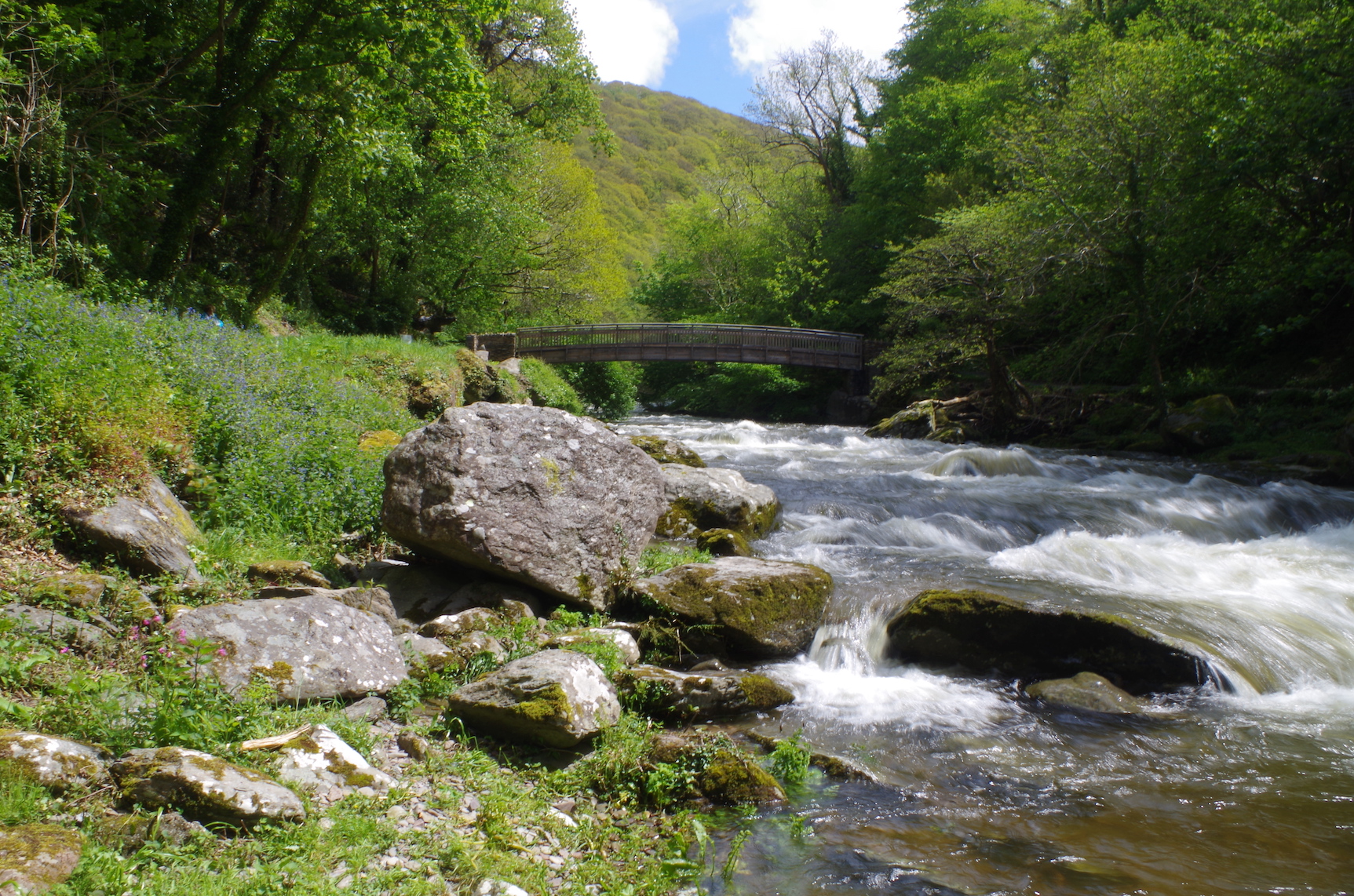
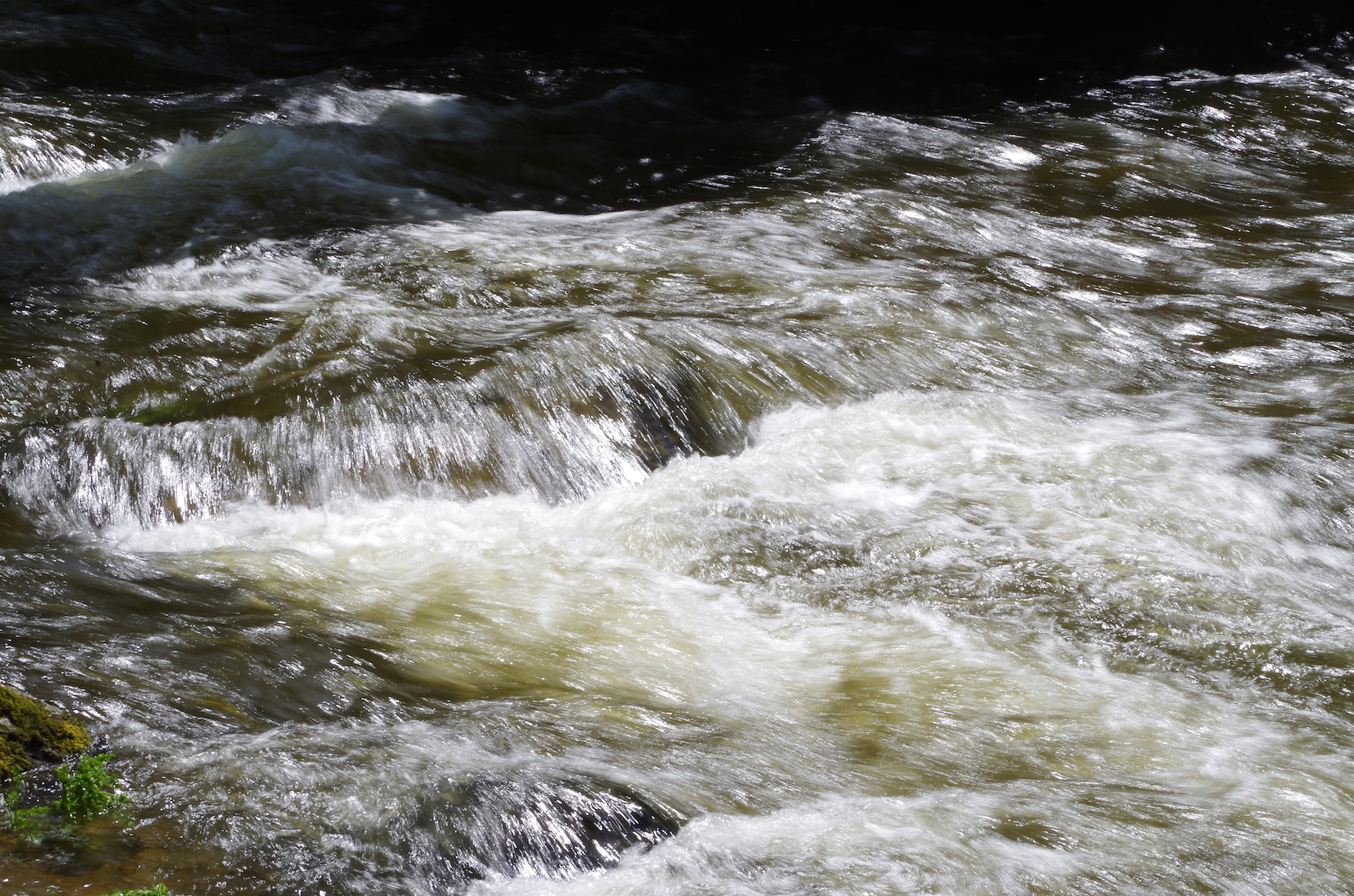
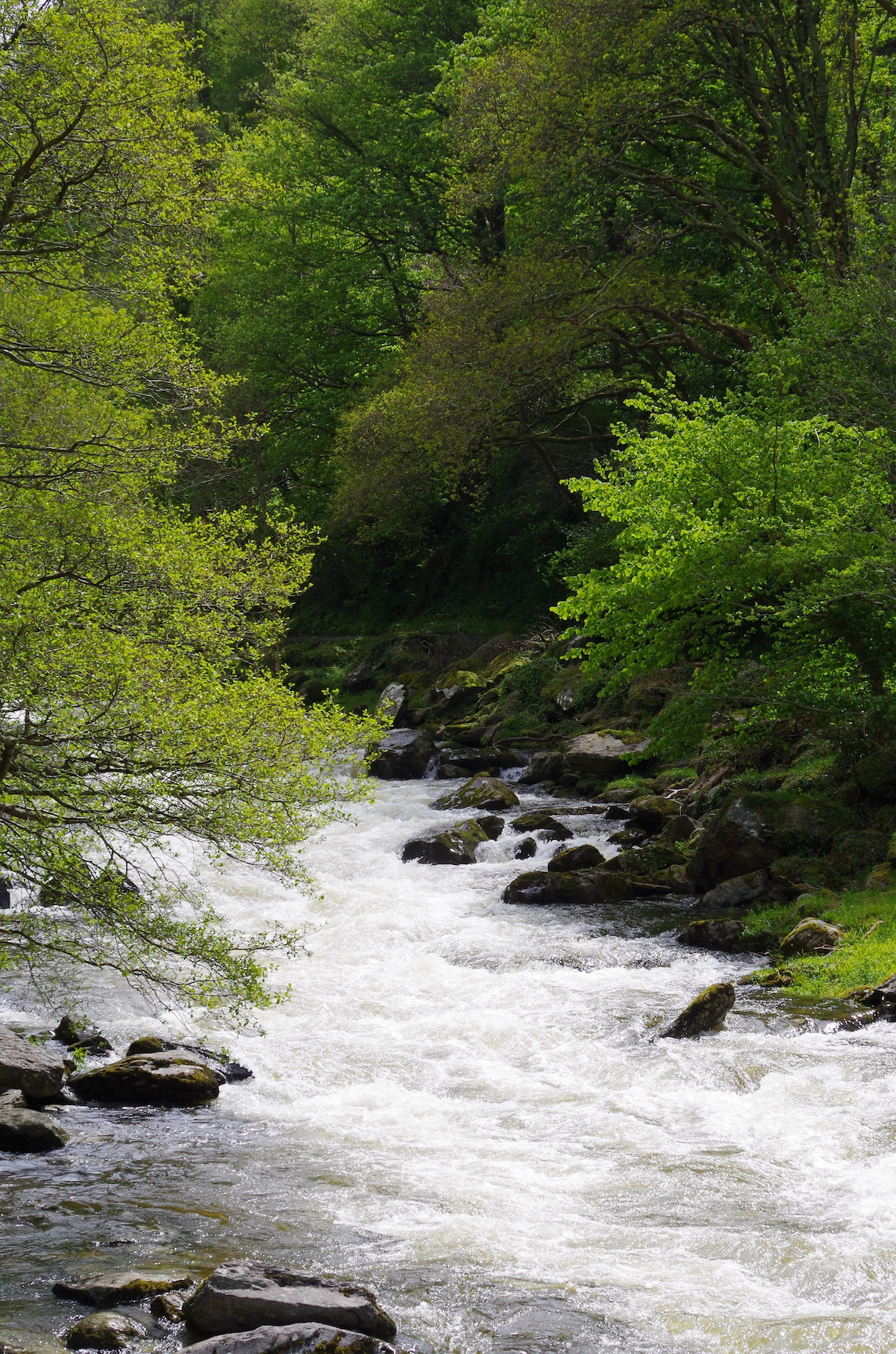
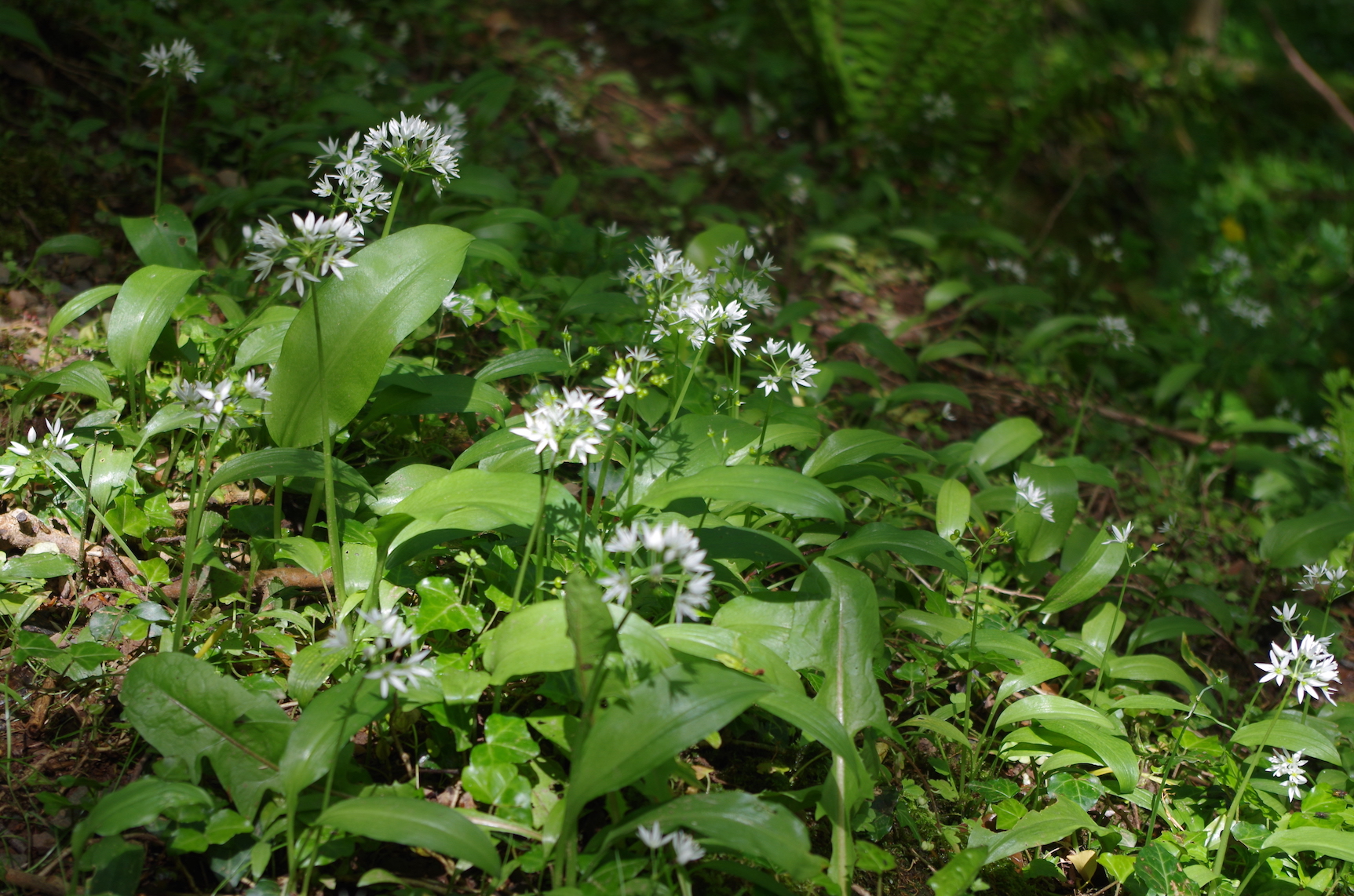
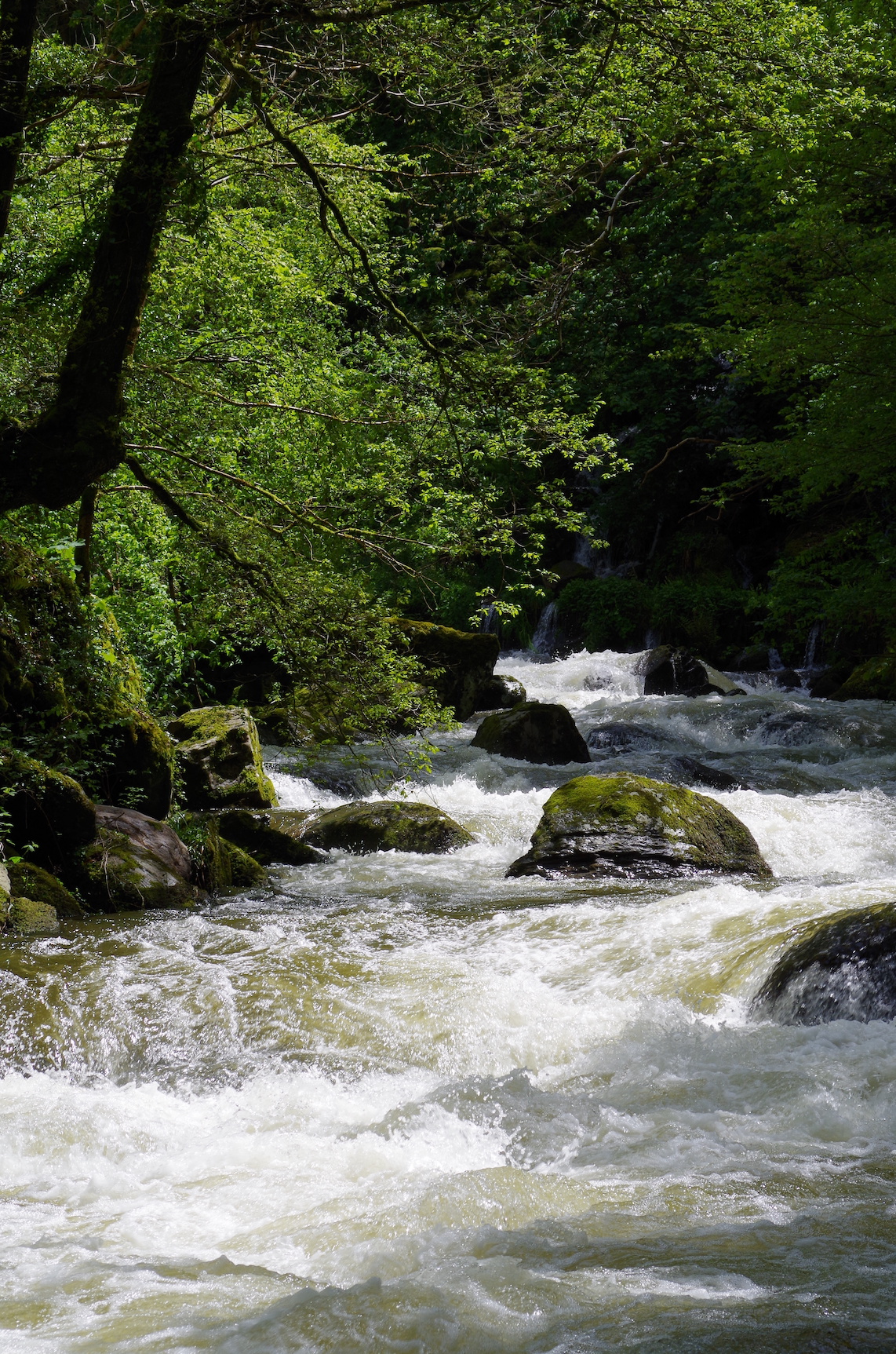
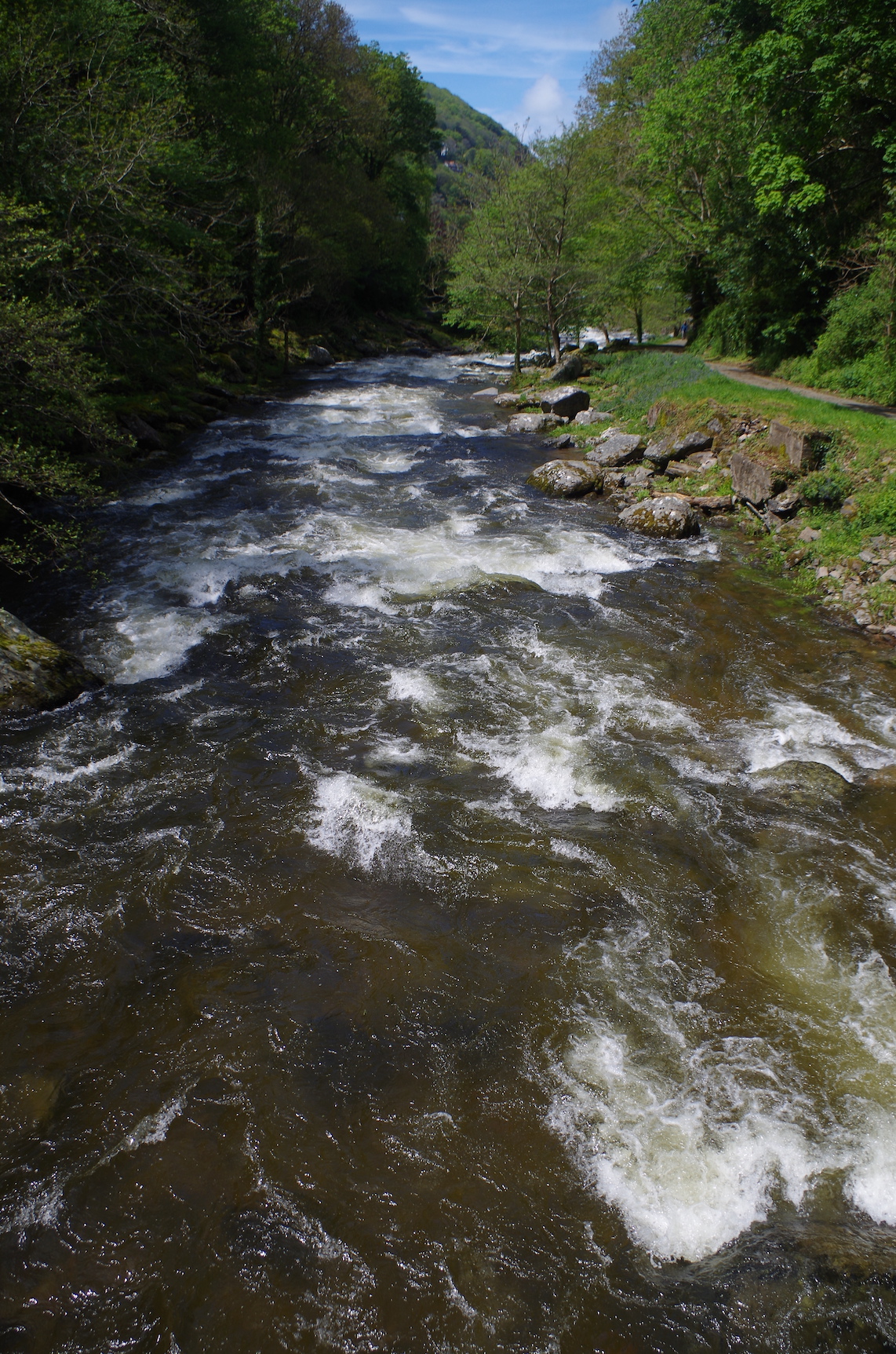
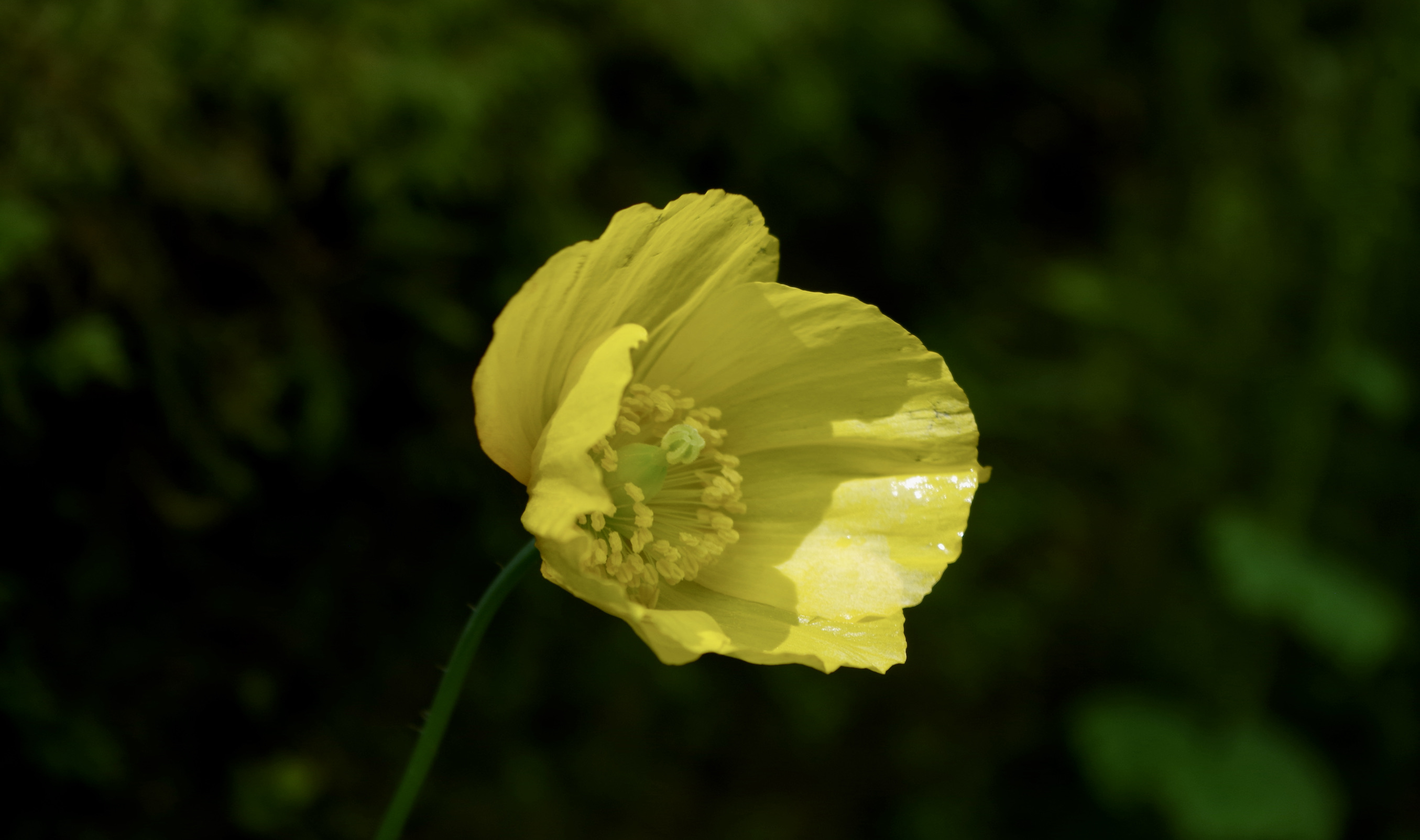
ww
Many thanks to Simon Francis who sent me this inspiring feature on the tumbling waters of the East Lyn.

Wild Brown Trout on the East Lyn
